30.11.2022
Artemis: Nasa's Orion capsule breaks distance record
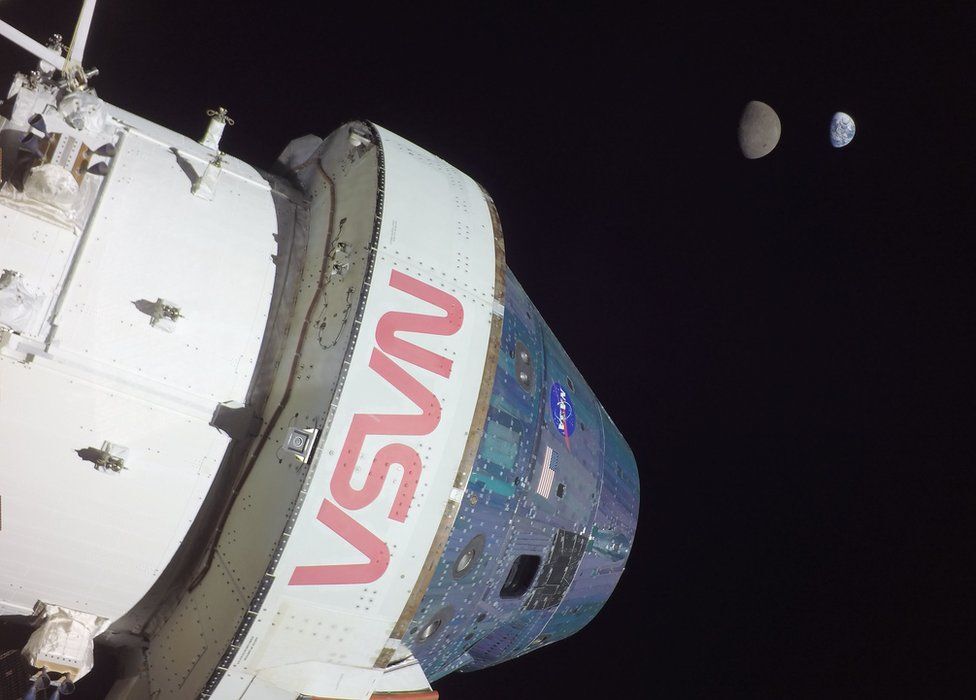
The Orion capsule looks back at the Moon and Earth on Monday
The US space agency's Orion capsule has reached a key milestone on its demonstration mission around the Moon.
On Monday, it moved some 430,000km (270,000 miles) beyond the Earth - the furthest any spacecraft designed to carry humans has travelled.
The ship is uncrewed on this occasion, but if it completes the current flight without incident, astronauts will be on the next outing in two years' time.
Nasa is planning a series of ever more complex missions with Orion.
They're part of the agency's Artemis programme, which seeks to return people to the lunar surface after a gap of 50 years.
Monday's milestone marks the middle point of the mission.
"This halfway point teaches us to number our days so that we can get a heart of wisdom," said Mike Sarafin, Nasa's Artemis mission manager.
"The halfway point affords us an opportunity to step back and then look at what our margins are and where we could be a little smarter to buy down risk and understand the spacecraft's performance for crewed flight on the very next mission."
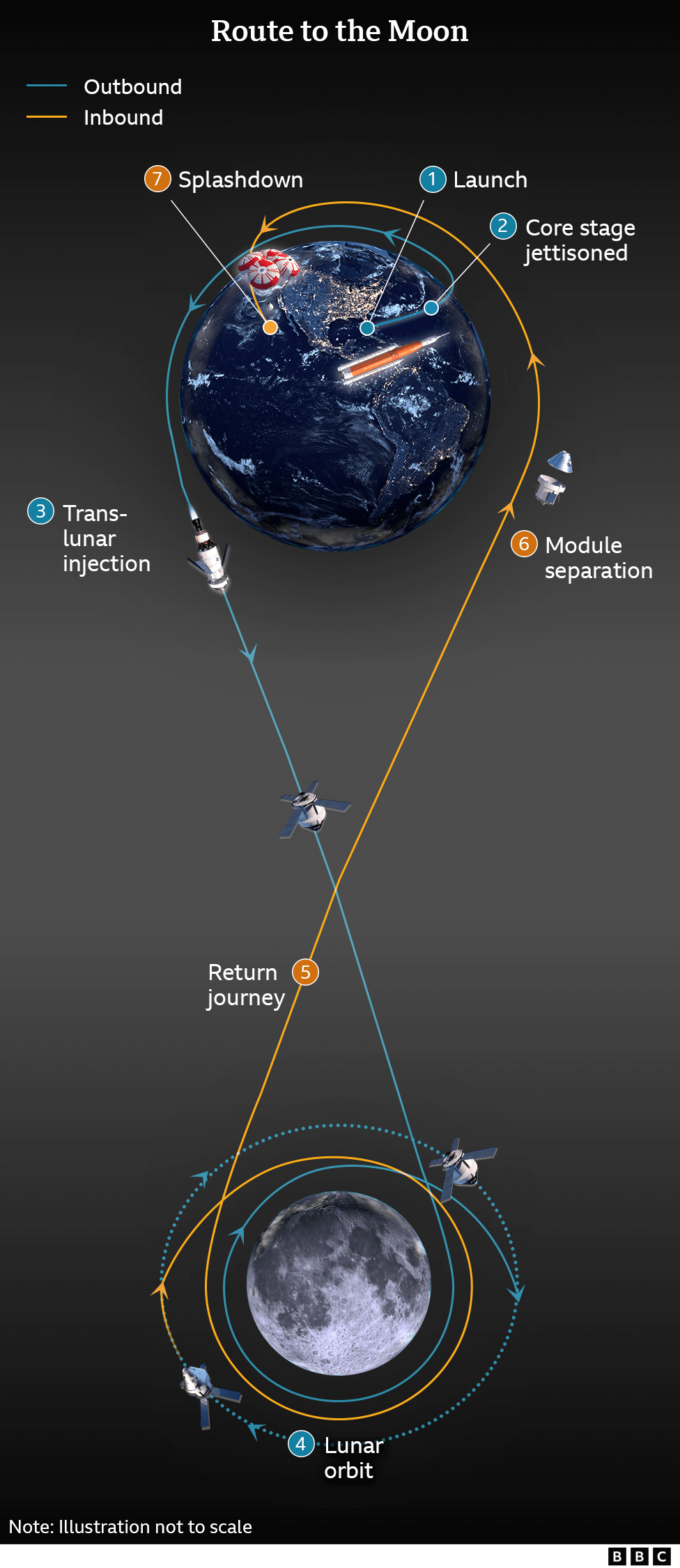
Orion has been streaming back some spectacular video of its journey. Just before reaching the record distance, it captured the Moon moving in front of the Earth.
The capsule was launched from Florida's Kennedy Space Center on 16 November on a 26-day mission designed to stretch its systems and make sure it is safe to carry astronauts.
Orion is being pushed through space by a service module provided by the European Space Agency (Esa). This vehicle incorporates the big thrusters needed to make manoeuvres.
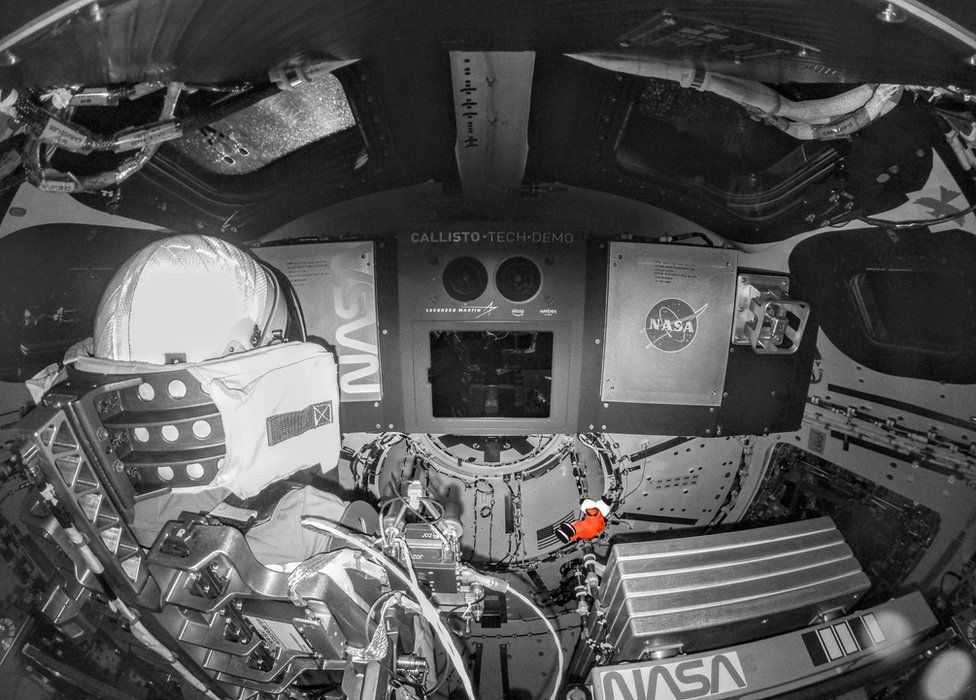
The Esa module delivered two key engine burns last week to get Orion into a big loop around the Moon known as a Distant Retrograde Orbit.
It's called "distant" because the path takes Orion a long way from the Moon's surface (61,000km; 38,000 miles) and "retrograde" because it sends the capsule in the opposite direction to the lunar body's direction of travel.
It will require two further manoeuvres in the coming days to put the capsule on the correct trajectory to come home.
The spacecraft is due to splash down in the Pacific Ocean off San Diego in California on 11 December.
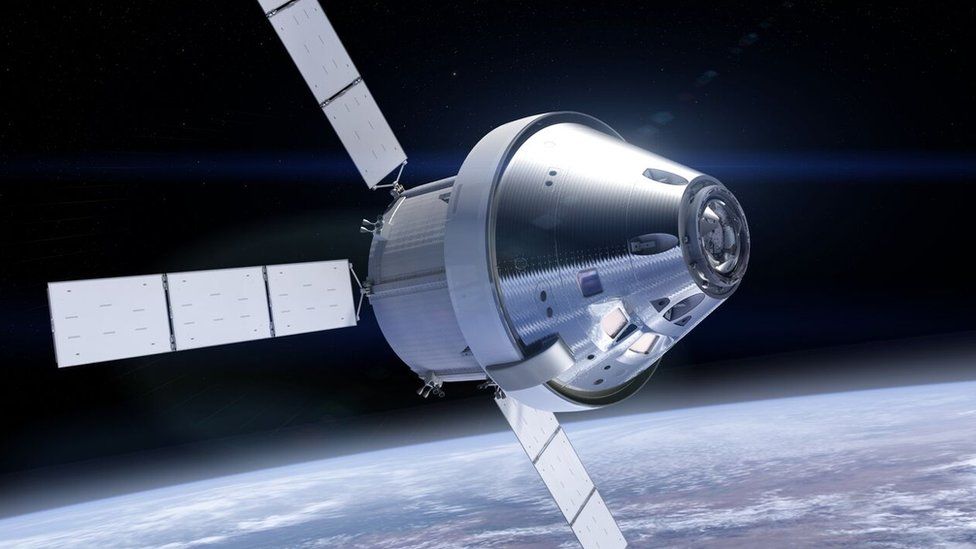
Controllers have been delighted with the performance to date. Orion, with its shepherding Esa module, has used much less fuel than expected. It's also generated more power than anticipated, while also being very frugal with its energy consumption.
There have been some small technical niggles, but "none of the anomalies, or funnies, that are out there are of consequence", said Mr Sarafin.
Controllers did lose communications with the capsule for 45 minutes on one occasion but this was determined to be an issue related to the configuration of equipment on Earth.
The previous record for the most distant point reached by a human-rated spacecraft was set by the Apollo-13 mission in April 1970.
It went out to 400,171km (248,655 miles) from Earth as its crew fought to navigate their way home following an explosion in their capsule's service module.
One of the manikins on board Orion has been nicknamed Commander Moonikin Campos in honour of Arturo Campos, a Nasa engineer who played a critical role in helping to get the troubled Apollo 13 back.
The first crewed Artemis mission is presently scheduled for late 2024. An Orion flight that would also see astronauts go down to the lunar surface could occur as early as 2025 or 2026.
"Of course, Artemis builds on Apollo," Nasa administrator Bill Nelson said.
"Not only are we going farther and coming home faster, but Artemis is paving the way to live and work in deep space in a hostile environment, to invent, to create, and ultimately to go on with humans to Mars."
Quelle: BBC
+++
Artemis 1 mission reaches halfway point
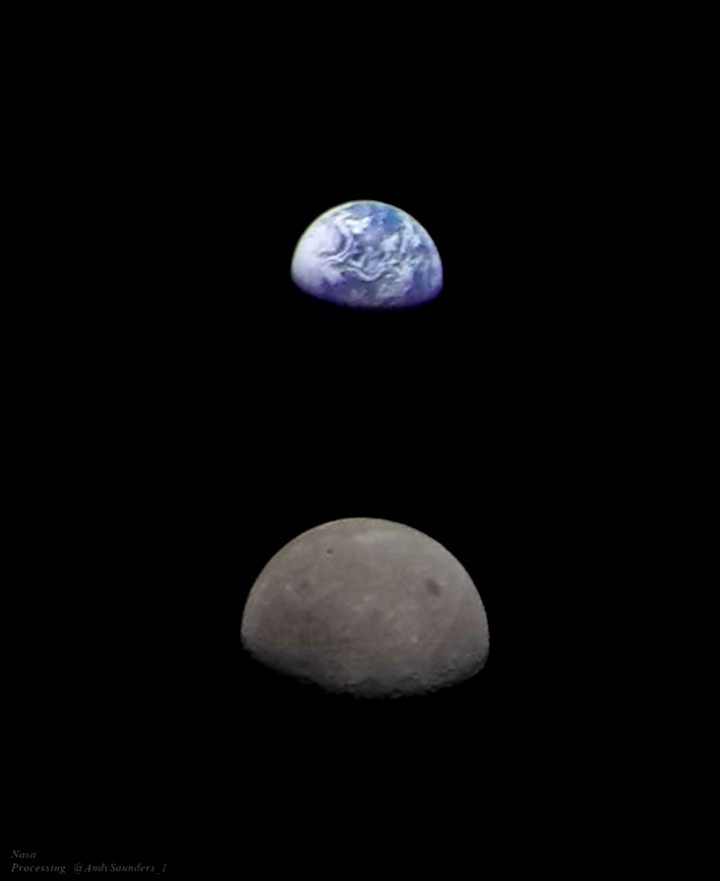
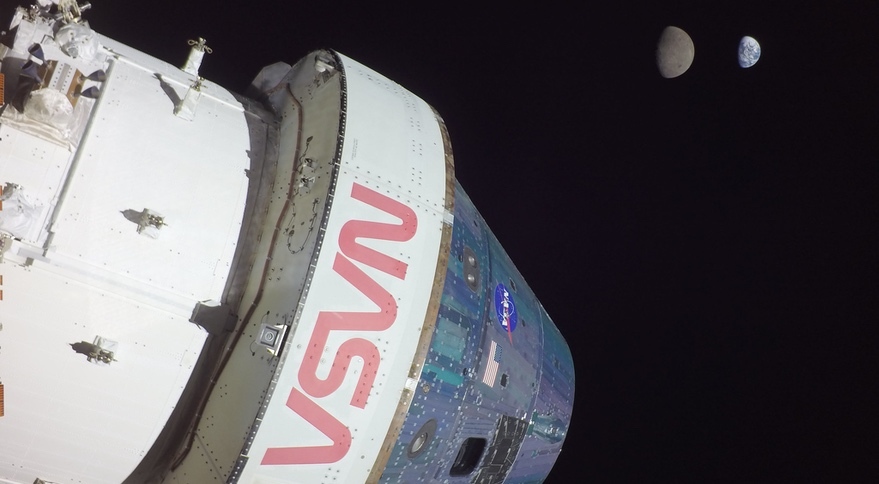
A camera on the Orion spacecraft captured an image of the spacecraft, along with the Earth and moon, on Nov. 28 as the spacecraft orbited the moon in a distant retrograde orbit. Credit: NASA
WASHINGTON — As the Artemis 1 mission reaches the halfway mark, NASA managers are adding additional test objectives for the Orion spacecraft to prepare for the vehicle’s first crewed flight.
At a Nov. 28 briefing, agency officials said they continued to be pleased by the performance of the uncrewed Orion spacecraft as it orbits the moon in the middle of the 25.5-day Artemis 1 mission. Controllers have dealt with only minor issues during the mission, none of which “are of consequence,” said Mike Sarafin, NASA Artemis 1 mission manager.
Because of that performance, NASA is adding seven new objectives to test the thermal environment of the spacecraft and its propulsion system during the mission. “We’re going to try and expand the thermal environment,” said flight director Rick LaBrode.
Orion normally flies in a “tail to sun” orientation with the aft section of the spacecraft pointed towards the sun for both thermal stability and power generation, but can deviate by up to 20 degrees in pitch and yaw. “What we’re doing is characterizing the corners of the box,” with the new test objectives, said Sarafin, as well as a requirement that, if the spacecraft is out of that orientation for more than three hours, it needs to return to its regular orientation for 10 hours for “thermal recovery” before using any thrusters.
“That is consistent with a test flight. We want to do envelope expansion and validate our models,” he said. “The halfway point in this mission affords us an opportunity to step back and look at what our margins are and where we could be a little smarter to buy down risk and understand the spacecraft’s performance for crewed flight on the very next mission.”
Those seven new objectives are on top of the 124 that Artemis 1 had for testing the performance of the Orion spacecraft. Sarafin said 25% of those objectives are now complete, with half of the rest in progress. Many of the remaining objectives, he said, are tied to events at the end of the mission, including reentry and splashdown.
Engineers have concluded an investigation into one issue Orion had suffered with random access memory in its star trackers. “We essentially concluded that the hardware is performing as expected and that this is a byproduct of the flight environment,” he said.
LaBrode said a 47-minute unexpected loss of communications with Orion early Nov. 23 was a configuration issue involving the Deep Space Network. Controllers had worked to increase bandwidth from Orion, which has enabled the spacecraft to stream live video. “It was simply a misconfiguration at the Deep Space Network, where they were set up for a data rate that the vehicle was not set up for,” he said.
While the performance of Orion is buying down overall risk ahead of the Artemis 2 crewed mission, Sarafin said that some won’t be addressed until Orion returns for a Dec. 11 reentry and splashdown off the California coast. The mission’s highest priority is to test the performance of the spacecraft when reentering at lunar return speeds, while another top priority is to recover the spacecraft after splashdown, including components like avionics units that will be reflown on Artemis 2.
“If you’re looking at our top ten risk drivers,” he said, “some of them have been retired, some are still in play, and some won’t be realized, for good or bad, until we get to entry, descent and splashdown day.”
Quelle: SN
----
Update: 2.12.2022
.
Initial Assessment Shows Excellent Performance for Artemis Moon Rocket

The Space Launch System (SLS) rocket performed with precision, meeting or exceeding all expectations during its debut launch on Artemis I. The world’s most powerful rocket set NASA’s Orion spacecraft on course for a journey beyond the Moon and back, and laying the foundation for the first mission with astronauts on Artemis II and humanity’s return to the lunar surface beginning with Artemis III.
“The first launch of the Space Launch System rocket was simply eye-watering,” said Mike Sarafin, Artemis mission manager. “While our mission with Orion is still underway and we continue to learn over the course of our flight, the rocket’s systems performed as designed and as expected in every case.”
The twin solid rocket booster motors responsible for producing more than 7 million pounds of thrust at liftoff reached their performance target, helping the rocket and spacecraft travel more than 27 miles from its launch site at Kennedy Space Center in Florida and reaching a speed of about 4,000 mph in just over two minutes before the boosters separated. No issues were reported for any of the booster subsystems including its avionics and thrust vector control system used for steering.
Analysis shows the rocket’s core stage and four RS-25 engines, which burned through the stage’s 735,000 gallons of propellants in just over eight minutes, met every expectation during launch as well as in the final minutes of the countdown before liftoff, when the flight computers and software are in control and many dynamic events involving pressurizing tanks, starting the engines, and igniting the boosters, happen in quick succession.
The mega Moon rocket delivered Orion within about three miles of its planned orbit altitude of 975 by 16 nautical miles, well within the planned range required for the mission, at a speed of approximately 17,500 mph. Analysis shows the rocket’s ascent and in-space software also performed as expected.
The interim cryogenic propulsion stage, the upper stage of the rocket used to perform two burns during the mission to first raise Orion’s orbit and then propel it toward the Moon, performed exactly as planned. The upper stage’s single RL-10 engine, which has powered successful missions to every planet in the solar system and to interstellar space over its more than 50 years in operation, set a single duration burn record, firing for more than 18 minutes to set Orion precisely on its multi-day outbound trek to intercept Earth’s nearest celestial neighbor.
“Performance was off by less than 0.3 percent in all cases across the board,” Sarafin said.
Engineers will continue conducting more detailed analysis of Space Launch System performance over the next several months as the agency continues making progress building and assembling elements for the rocket for Artemis II and beyond.
“I’ve been privileged to lead the team which designed, built, tested and now flown the Space Launch System rocket on its historic first flight, the Artemis I mission,” said John Honeycutt, SLS program manager at NASA’s Marshall Space Flight Center in Huntsville, Alabama. “With this amazing Moon rocket, we’ve laid the foundation for Artemis and for our long-term presence at the Moon. The performance of the rocket and the team supporting its maiden voyage was simply outstanding.”
The SLS Program is managed by Marshall, and many parts of the rocket were built and tested at Marshall and at NASA’s Michoud Assembly Facility in New Orleans, as well as at Stennis Space Center in Bay St. Louis, Mississippi. Engineers at Marshall supported the Artemis I launch real-time from the center’s SLS Engineering Support Center as well as in the Launch Control Center at NASA’s Kennedy Space Center in Florida.
Quelle: NASA
----
Update: 3.12.2022
.
Orion begins return leg of Artemis 1 mission
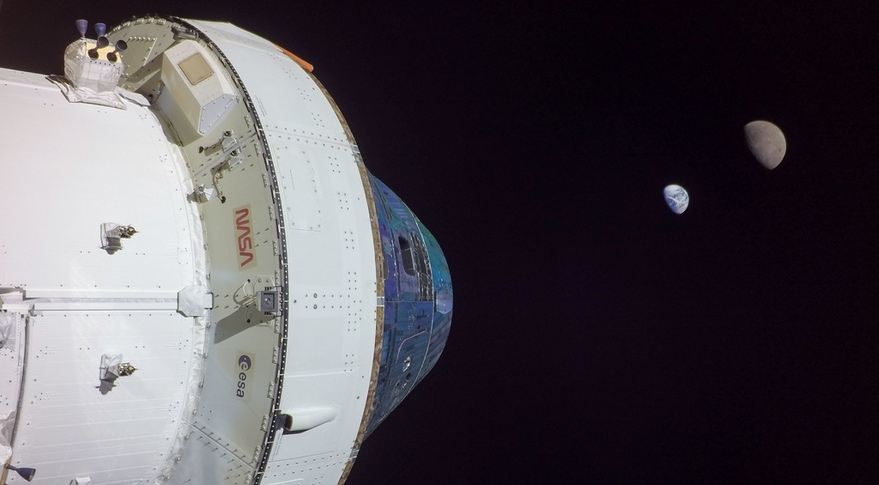
A view of the Orion spacecraft, the moon and Earth from a camera on one of Orion's solar arrays taken while in distant retrograde orbit around the moon. Credit: NASA
WASHINGTON — NASA’s Orion spacecraft started its trip back to Earth Dec. 1 with the first of two maneuvers that will put the spacecraft on course for a splashdown in the Pacific Ocean in a week and a half.
The main engine in Orion’s service module fired at 4:53 p.m. Eastern for 1 minute at 45 seconds. That burn nudged the spacecraft out of the distant retrograde orbit around the moon it had been in since Nov. 25.
Orion is now descending back towards the moon, where it will perform a second maneuver, called the return powered flyby, on Dec. 5. That will set up Orion for a reentry and splashdown off the California coast Dec. 11.
At a Nov. 30 briefing, NASA managers said the spacecraft continued to perform well with only minor issues. “We are very proud that our system is functioning perfectly. It’s better than we ever expected,” said Philippe Deloo, ESA program manager for the European Service Module. The spacecraft was producing more electrical power than expected but consuming less than expected because of better thermal stability.
The propulsion system, which includes the main engine that is a repurposed shuttle-era Orbital Maneuvering System engine as well as several auxiliary thrusters and reaction control system thrusters, also is working well, he said, despite problems in its development. “The regulation of the propulsion system has been our trouble child throughout development, and it has just worked beautifully,” he said. “No problem whatsoever with this propulsion system.”
That lack of problems has freed up controllers to perform additional tests of the spacecraft. “With how well the mission is going, we have found ourselves, rather than having to work anomalies, able to push the boundaries,” said Zebulon Scoville, deputy chief flight director. That, he said, helps further reduce the risks for astronauts on Artemis 2, the first crewed mission.
Mission managers earlier added seven flight objectives during the spacecraft’s stay in distant retrograde orbit to test out the thermal characteristics of the spacecraft and its propulsion system. That included a thruster firing to maintain that orbit Nov. 30 that used auxiliary thrusters for longer than previous burns to see how they performed.
Mike Sarafin, Artemis 1 mission manager, said they have added four more objectives for the return leg of the mission. Two involve tests of a valve in a helium pressurization system to characterize its leak rate. A third will test attitude control maneuvers at a faster rate, and the fourth will test a different attitude control mode that could save propellant.
“We all came into the mission expecting to have challenges,” Scoville said, with controllers going through extensive training for such problems. “Instead, it’s kind of purring along and staying very smooth. The kinds of discussions we’re having are how to rev the engine a little bit harder and how to push it a little bit harder and faster.”
Quelle: SN
+++
Orion capsule leaves lunar orbit, heads for moon flyby and return to Earth
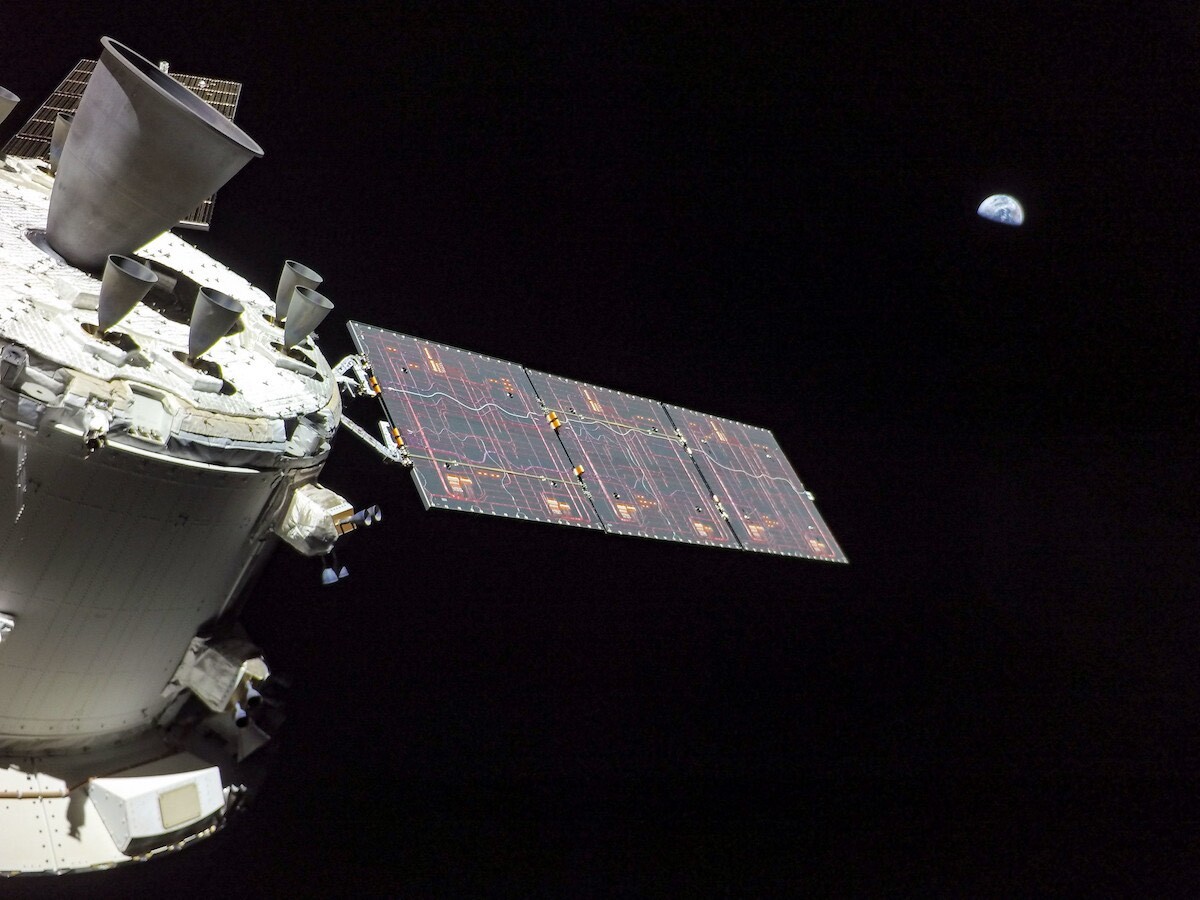
A camera on one of the Orion spacecraft’s solar arrays captured this view Nov. 30 of the Orbital Maneuvering System engine, a leftover from the space shuttle program. Earth is visible in the distance more than a quarter-million miles away. Credit: NASA
Continuing a “drama-free” test flight, NASA’s unpiloted Orion spacecraft is set to fire its main engine Thursday to leave a distant orbit around the moon, heading for a flyby close to the lunar surface next week to swing onto a trajectory bringing it back to Earth for splashdown in the Pacific Ocean on Dec. 11.
The burn with the Orion spacecraft’s orbital maneuvering system engine occurred at 4:53 p.m. EST (2153 GMT). The 6,000-pound-thrust, hydrazine-fueled engine fired for 1 minute and 45 seconds, enough to nudge the spacecraft out of its distant retrograde orbit around the moon, where it’s been flying since Nov. 25. The maneuver was expected to change Orion’s velocity by roughly 310 mph (454 feet per second; 498 kilometers per hour).
The orbit departure burn was the fourth of five main engine firings the Orion spacecraft will execute on on NASA’s Artemis 1 mission, a test flight of the agency’s new deep space capsule and heavy-lift rocket before astronauts strap in for a trip around the moon on Artemis 2, scheduled for late 2024. NASA plans to land astronauts on the moon beginning with Artemis 3, debuting a commercial moon lander derived from SpaceX’s Starship rocket program.
With only a few unexpected events, or “funnies,” so far in the mission, managers have added 11 bonus flight test objectives to further wring out the Orion spacecraft before astronauts fly it in two years. These are on top of the 124 test objectives NASA engineers identified going into the mission.
“Rather than having to work anomalies we’re able to push the boundaries,” said Zeb Scoville, NASA’s deputy chief flight director at the Johnson Space Center in Houston.
The additional tests involve longer-duration firings of the auxiliary engines on the Orion spacecraft’s service module, supplied by the European Space Agency and Airbus. The spacecraft completed a 95-second firing of the auxiliary engines Wednesday, far exceeding the 17-second duration of the mission’s previous longest burn of the smaller thrusters that surround the main engine.
Chris Edelen, deputy manager for NASA’s Orion integration office, said one of the goals of the longer-duration thruster firing was to verify thermal models and observe how the plume and heat from the thruster exhaust affects the four solar array wings on the service module.
The Orion spacecraft is designed to normally fly with its tail pointed toward the sun. That’s the best orientation, or attitude, to keep the spacecraft thermally balanced and maximize power generation from its solar arrays. The spacecraft can veer as far 20 degrees from its tail-to-sun attitude, but for Artemis 1, mission managers planned more conservative limits to keep it within a 2-by-4 degree box.
Edelen said mission controllers in Houston commanded the Orion spacecraft to change its attitude to different parts of the broader 20-degree box to measure changes in the temperatures of various components on the vehicle.
“It’s probably not the most glamorous part of spaceflight, but heaters and analyzing your thermal performance of your spacecraft is very important because, as you can imagine, you don’t want any valves to seize up in the cold of space, or have propellant lines or water lines freeze and potentially burst,” Edelen said. “So it’s very important that we get good data on the thermal environment in these different attitudes, or orientations, of the spacecraft.”
If the spacecraft doesn’t need to power on heaters, engineers could redirect some electricity to support other mission functions.
“The heaters tend to be big power hogs,” Edelen said. “They are one of the biggest impacts to our power usage. So by flying different attitudes, we’re better able to analyze what our power usage is, and hopefully free up some power for future missions.”
Other bonus objectives for the return trip to Earth include testing to see how the opening and closing a valve affects a slow, and expected, leak rate in a pressure control assembly in the Orion propulsion system. Another extra test will demonstrate the Orion spacecraft’s ability to change its orientation at a faster rate of up to 4 degrees per second, which it will need to do on the Artemis 2 mission with astronauts on-board.
“All that is telling us about the performance of the thermal systems, about the camera systems, about the navigation systems, so we can know how is this going to work,” Scoville said in a press conference Wednesday.
Another added task will be a test of a so-called three degree of freedom attitude control mode that may allow the spacecraft to conserve more propellant.
The Orion spacecraft is designed to accommodate a crew of four astronauts in deep space for up to 21 days, and can fly longer missions when docked to Gateway mini-space station NASA and its international partners plan to build in orbit around the moon. The Orion crew module, where astronauts will live during lunar expeditions, was built by Lockheed Martin.
NASA awarded Lockheed Martin the contract to develop the Orion spacecraft in 2006 under the umbrella of the agency’s Constellation moon program, which was canceled in 2010.
NASA kept the Orion program alive through two major restructurings of the agency’s deep space exploration efforts, first during the Obama administration, when Congress and the White House agreed to pivot NASA’s focus to a human mission to Mars, with an interim crewed expedition to an asteroid.
The Trump administration shifted NASA’s exploration program back to the moon. NASA dubbed the moon program Artemis, naming it for the twin sister of Apollo in Greek mythology.
Through it all, the Orion program survived. NASA committed $14.2 billion to develop the Orion spacecraft from 2012 through the end of this fiscal year Sept. 30, plus an additional $6.3 billion spent on the program in the prior decade under the Constellation program. That comes to $20.5 billion over the course of a decade-and-a-half of work.
The only minor issues engineers have discovered since Artemis 1’s launch include “funnies” with the spacecraft’s star trackers, which are used to determine the capsule’s position in space. That turned out not to be a problem. “In the case of the star tracker … we’ve learned that this is actually how the system was going to function in the flight environment,” Edelen said.
Engineers have also seen fluctuations in coolant flow in a thermal control system loop, and determined that is likely caused by a gas bubble in the system. A computer also reset when it was hit by space radiation, an expected occurrence on a deep space mission.
Edelen said the mission, so far, has been “drama-free.”
“I would call it over achieving,” said Mike Sarafin, NASA’s Artemis 1 mission manager.
“We’re not finding any huge surprises,” Sarafin said. “The surprises that we we are having are pleasant surprises … We continue to build that confidence that this is our deep space human transportation system, and it is meeting or exceeding expectations across the board.”
While there are no humans on-board Artemis 1, there are three instrumented mannequins inside the Orion spacecraft’s pressurized cabin to gather data on accelerations, vibrations, and radiation on the flight to the moon and back. There’s also a biological experiment inside the cockpit to help scientists study how the deep space environment, including elevated levels of ionizing radiation, affects organisms like plant seeds, fungi, yeast, and algae.
The crew cabin in the Artemis 1 capsule is kept pressurized at a temperature in the mid-50s Fahrenheit, Edelen said. The Orion spacecraft’s full life support system will fly for the first time on Artemis 2.
Engineers on Earth have also been uplinking messages and commands to a voice-activated crew interface technology demonstration payload named Callisto inside the pressurized crew module. A stuffed Snoopy toy is also on-board.

NASA has flown a stripped down Orion crew capsule in space once before in 2014, when the spacecraft launched into a high-altitude orbit around Earth for a four-hour test flight. Artemis 1 is the first time an Orion spacecraft has flown with its European-built service module.
“We are very proud that our system is functioning perfectly,” said Philippe Deloo, ESA’s service module program manager. “It’s even better than we ever expected.”
“The propellant margins have kept increasing throughout the mission through the excellent performance of the system,” he said. “We are rich in power. The solar arrays produce more power, about 15% more power than planned, and the consumption is less. The consumption is less because basically the thermal environment is much more benign in terms of the spacecraft than we had foreseen.
“The regulation of the propulsion system has been our troubled child throughout the development, and it has just worked beautifully,” Deloo said Wednesday. “No problem whatsoever with this propulsion system, and we hope that’s going to continue like this for the big burns and all the trajectory correction burns that will happen up to the return of the vehicle.”
Artemis 1 launched Nov. 16 from NASA’s Kennedy Space Center in Florida on the inaugural flight of the Space Launch System moon rocket, a 322-foot-tall (98-meter) behemoth that took a decade and more than $22 billion to develop.
Another $5.4 billion in the same period went toward readying Kennedy Space Center’s ground infrastructure for SLS and Orion missions.
The SLS moon rocket performed flawlessly, NASA officials said, sending the Orion capsule on a five-day track toward the moon, where it zoomed about 80 miles (130 kilometers) from the surface Nov. 21. The close flyby used lunar gravity to swing the Orion spacecraft into a distant retrograde orbit, or DRO, some 50,000 miles (80,000 kilometers) from the moon.
Another main engine burn Nov. 25 placed the Orion spacecraft into the DRO, so named because it is not a low-altitude orbit like the Apollo capsules of the 1960s and 1970s flew in, and because Orion is moving around the moon in the opposite direction the moon travels around Earth.
Mission planners chose the orbit for the Artemis 1 mission for several reasons. First, the Orion spacecraft’s propulsion system does not have the capability to steer the capsule into a low-altitude orbit around the moon as the Apollo missions did. And the DRO is stable because it is near the balance point between the pull of gravity from Earth and the moon, reducing the fuel Orion needs to burn to maintain its orbit.

The Orion spacecraft spent about six days in the distant retrograde orbit performing tests and checkouts, long enough to complete one-half of a lap around the moon. On Saturday, the capsule broke the distance record for a spacecraft designed to carry humans into space and return them to Earth, according to NASA.
The record was previously set on NASA’s Apollo 13 mission, which reached a distance of 248,655 miles (400,171 kilometers) from Earth when it looped around the far side of the moon with a three-man crew in 1970. Apollo 13’s moon landing was aborted when one of its oxygen tanks exploded on outbound journey from Earth, and the spacecraft steered onto a “free return” trajectory that took it farther from Earth than any of the other Apollo missions.
The Orion spacecraft reached its greatest distance from Earth on Monday, Nov. 28, at more than 268,500 miles (432,000 kilometers).
After Thursday’s 105-second main engine burn to leave the distant retrograde orbit, the moon’s gravity will pull the Orion spacecraft toward a high-speed flyby just 79 miles (127 kilometers) from the surface on Monday, Dec. 5. The Orion main engine will fire again at 11:43 a.m. EST (1643 GMT) for 3 minutes and 27 seconds, the spacecraft’s longest burn on the Artemis 1 mission.
The return powered flyby maneuver will aim Orion toward its splashdown point in the Pacific Ocean. The spacecraft will jettison its European service module just before re-entry, then perform two dips into the atmosphere to bleed off speed before deploying parachutes for splashdown off the coast of San Diego on Dec. 11.
Quelle: SN
----
Update: 4.12.2022
.
NASA Sets Coverage of Orion’s Historic Moon Mission Return, Splashdown
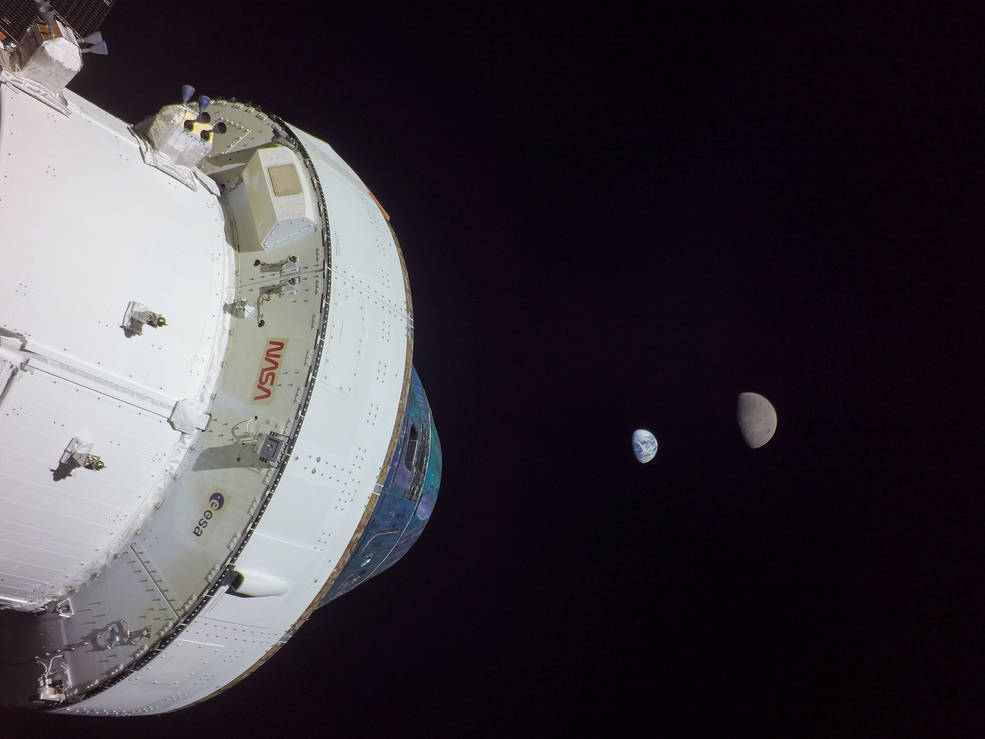
NASA will provide live coverage of the Artemis I uncrewed Orion spacecraft’s return flyby of the Moon on Monday, Dec. 5, as well as its return to Earth on Sunday, Dec. 11.
The agency also will host several briefings to discuss the upcoming activities from Johnson Space Center in Houston. NASA will provide live coverage on NASA Television, the agency’s website, and the NASA app.
Orion has begun its return trek toward Earth, completing a burn Dec. 1, to exit a lunar orbit thousands of miles beyond the Moon, where engineers have been testing systems to improve understanding of the spacecraft before future missions with astronauts.
Return lunar flyby coverage will begin at 9 a.m. EST Monday, Dec. 5. The return powered flyby burn, in which the spacecraft will harness the Moon’s gravity and accelerate back toward Earth, is expected at 11:43 a.m. The spacecraft is expected to fly about 79 miles above the lunar surface at 11:42 a.m., just before the burn.
U.S. media wishing to join in the news conferences in person must request credentials from the Johnson newsroom no later than 1 p.m. on the day of each briefing at 281-483-5111 or jsccommu@mail.nasa.gov. Media interested in participating by phone must also contact the Johnson newsroom no later than one hour before the start of the briefings.
Live coverage as Mission Control, Houston, monitors the spacecraft’s entry, descent, and splashdown off the coast of San Diego will begin at 11 a.m. Sunday, Dec. 11. Splashdown is expected at 12:40 p.m., after which the exploration ground systems recovery team from NASA’s Kennedy Space Center in Florida, working with the U.S. Navy, will recover the spacecraft.
NASA also is hosting a STEM event in collaboration with the San Diego Air and Space Museum at 9 a.m. PST Sunday, Dec. 11, for students and families to learn about Orion and the science, technology, engineering, and math that ensures the success of the agency’s missions. Participants will be able to watch a live stream of the splashdown, participate in STEM hands on activities, and hear from NASA experts and Department of Education Deputy Secretary Cindy Marten.
Following the lunar flyby Dec. 5, NASA will host a 5 p.m. news conference at Johnson.
Participants will include:
- Mike Sarafin, Artemis mission manager, NASA Headquarters
- Judd Frieling, flight director, NASA Johnson
- Debbie Korth, Orion Program deputy manager, NASA Johnson
- Melissa Jones, landing and recovery director, NASA Kennedy Space Center
The agency also will hold a 5 p.m. Thursday, Dec. 8, news conference to preview Orion’s entry through Earth’s atmosphere, descent, and splashdown in the Pacific Ocean off the coast of San Diego.
Participants will include:
- Mike Sarafin, Artemis mission manager, NASA Headquarters
- Judd Frieling, flight director, Johnson
- Howard Hu, manager, Orion Program, NASA Johnson
- Melissa Jones, landing and recovery director, NASA Kennedy
A news conference also will be held after splashdown, about 3:30 p.m. Dec. 11.
Participants will include:
- Bill Nelson, NASA administrator
- Jim Free, NASA associate administrator for the Exploration System Development Mission Directorate, NASA Headquarters
- Howard Hu, Orion Program manager, Johnson
- Emily Nelson, chief flight director, Johnson
- Melissa Jones, recovery director, Kennedy
Following a successful launch on NASA’s Space Launch System rocket, Artemis I is testing the Orion spacecraft on a rigorous mission in the extreme environment of deep space around the Moon before flying astronauts on Artemis II in 2024. Artemis includes a series of increasingly complex missions that will enable human exploration at the Moon where the agency will prepare for future missions with crew to Mars.
Quelle: NASA
----
Update: 5.12.2022
.
is set to make its final flyby of the Moon as it prepares for return home.
Mission Time: 19 days, 3 hrs, 39 min Orion is 229,006 mi from Earth, 11,178 mi from the Moon, cruising at 3,466 mph. P: 177572, 138222, 60298 V: -1406, 2797, 1487 O: 24º, 16º, 319º
Live Screenshots Artemis1:
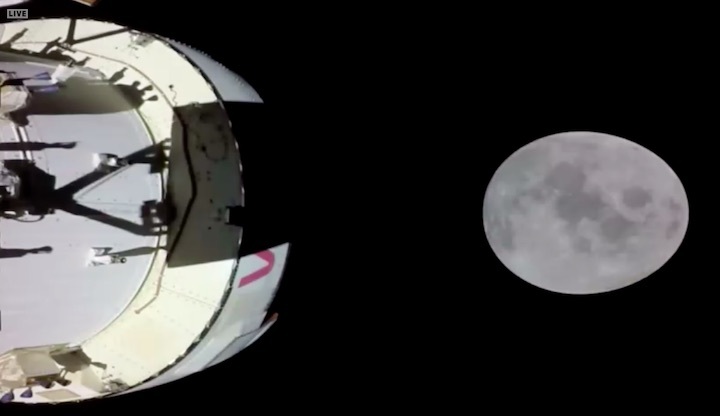
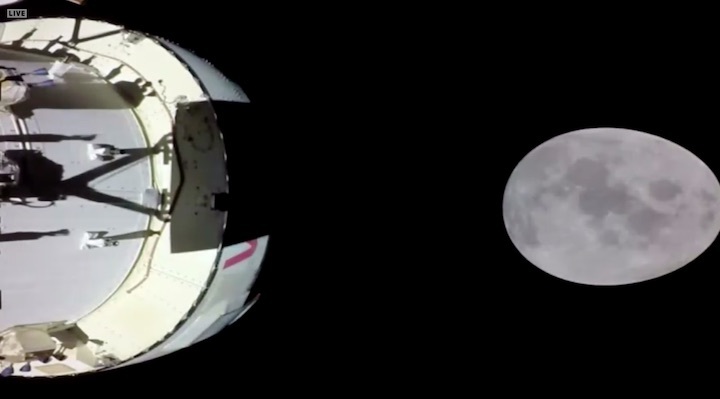
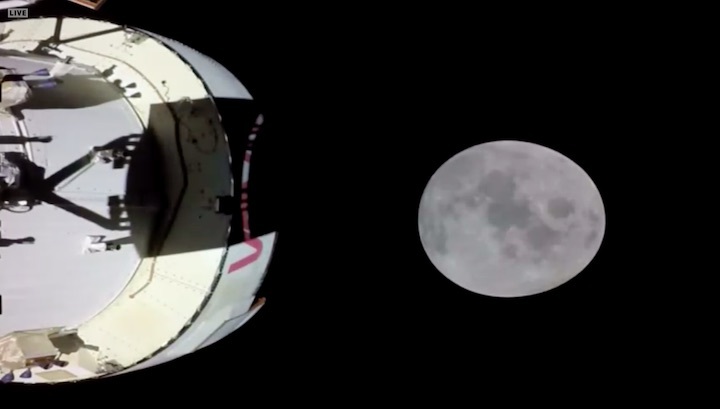
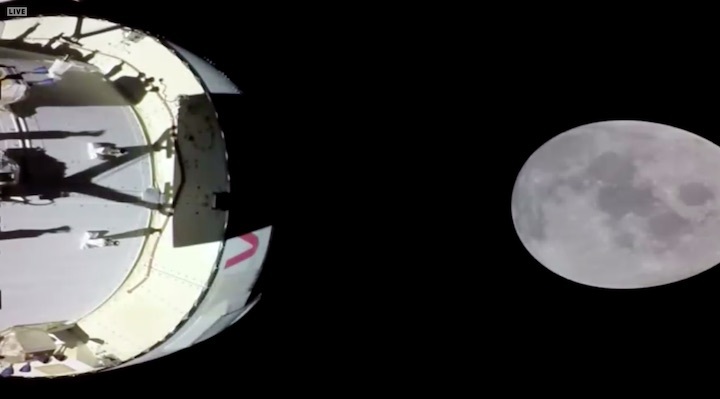
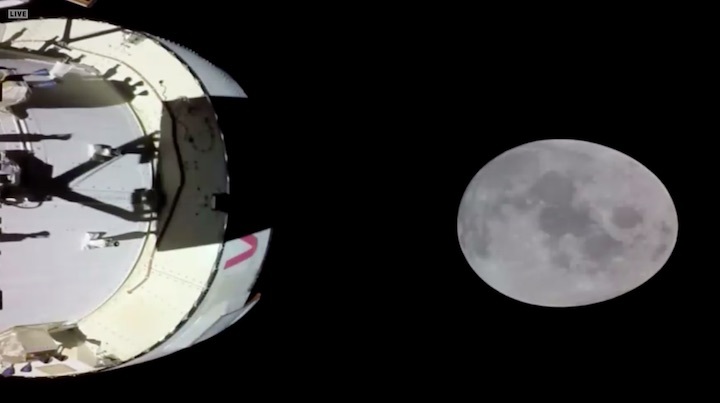
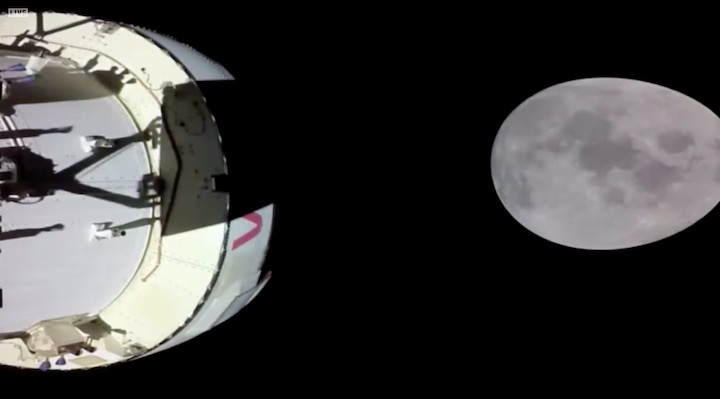
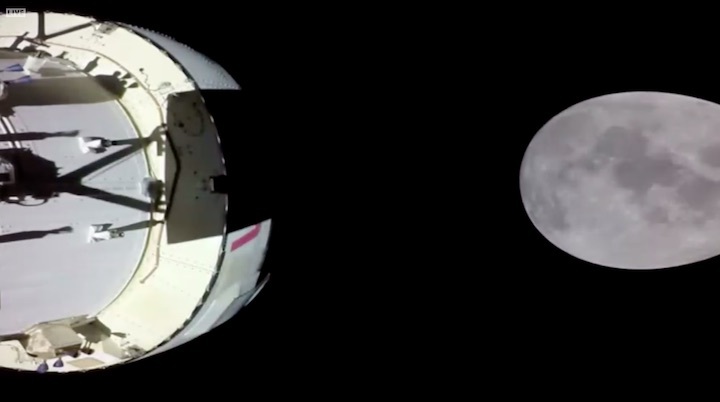
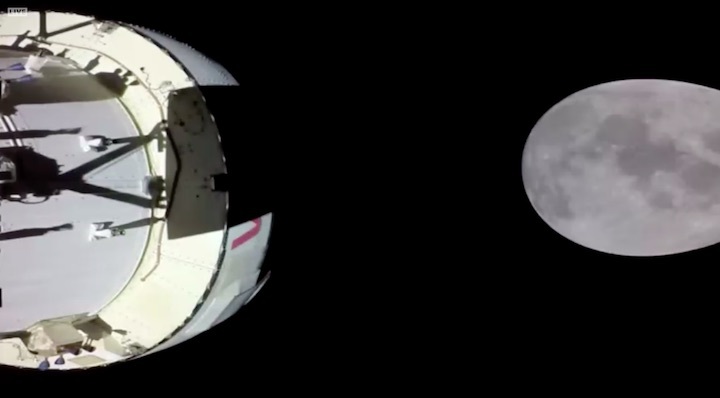
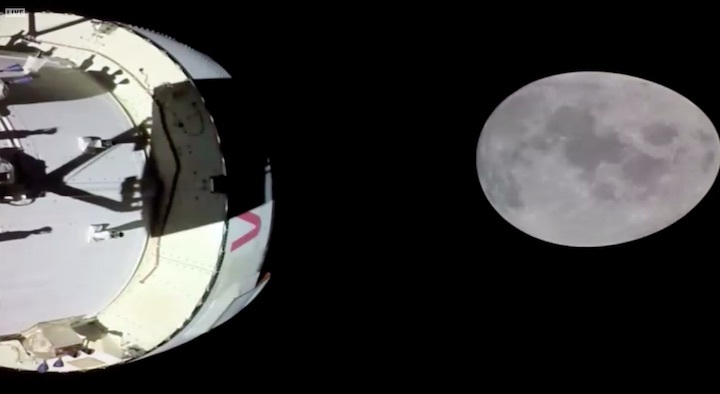
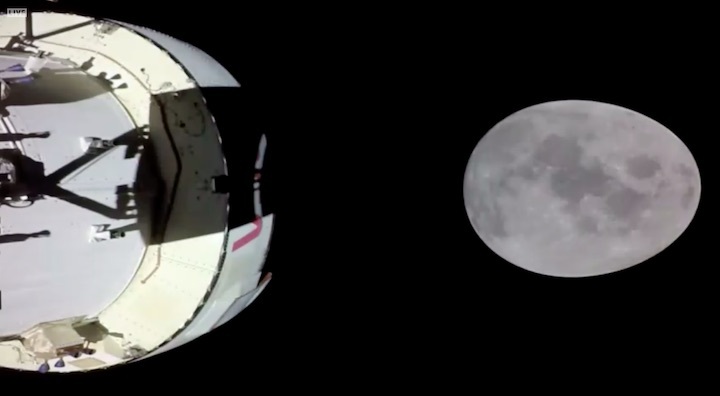
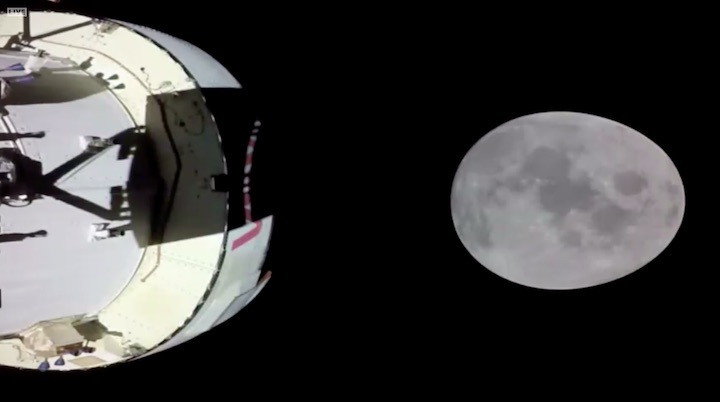
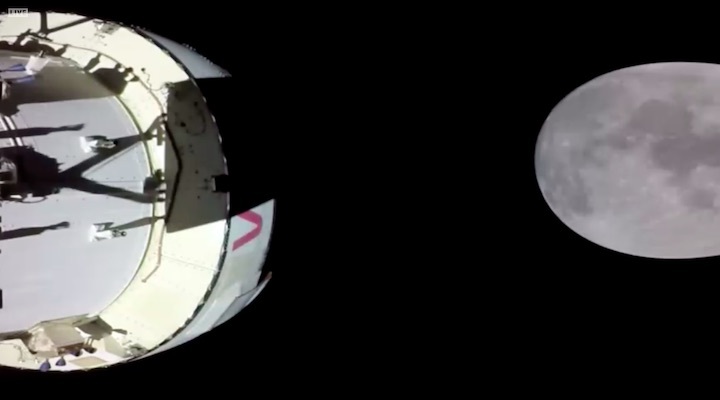
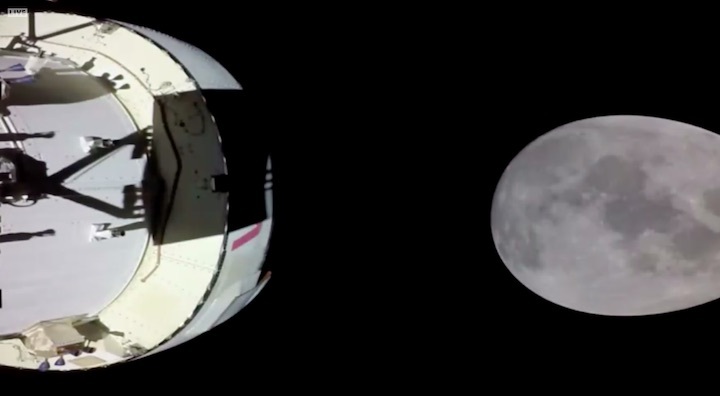
+++
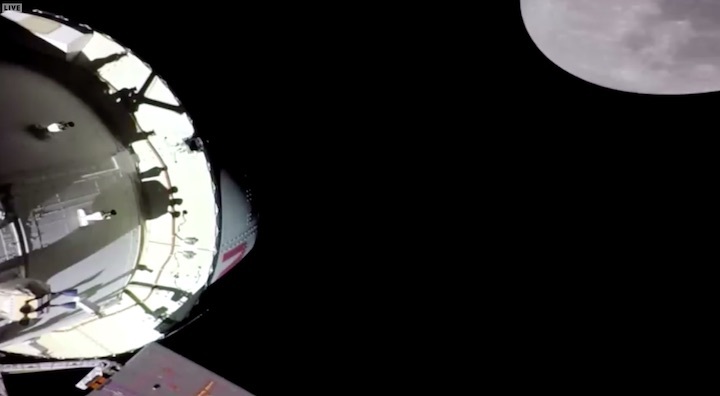
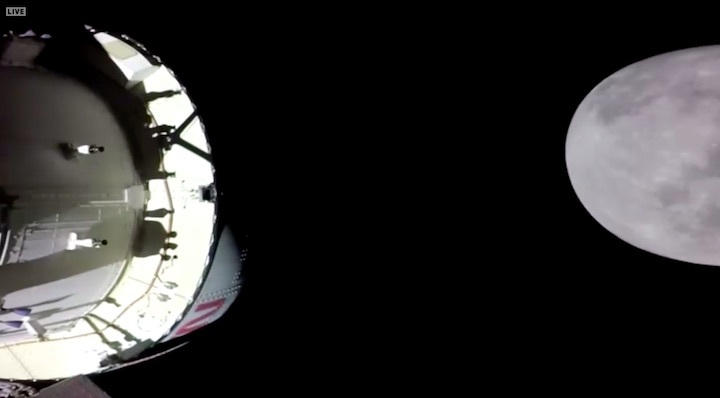
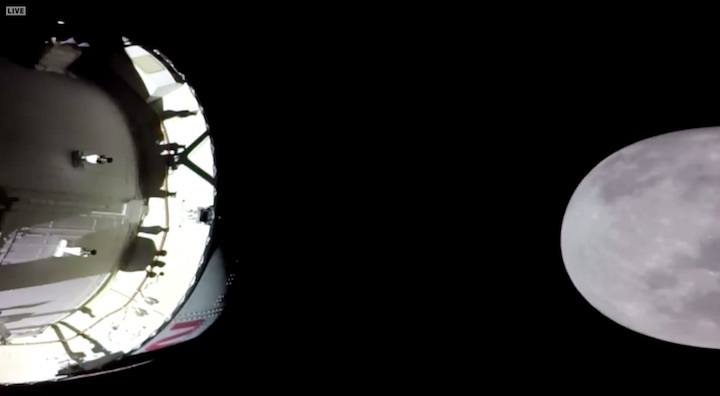
+++15:20 MEZ
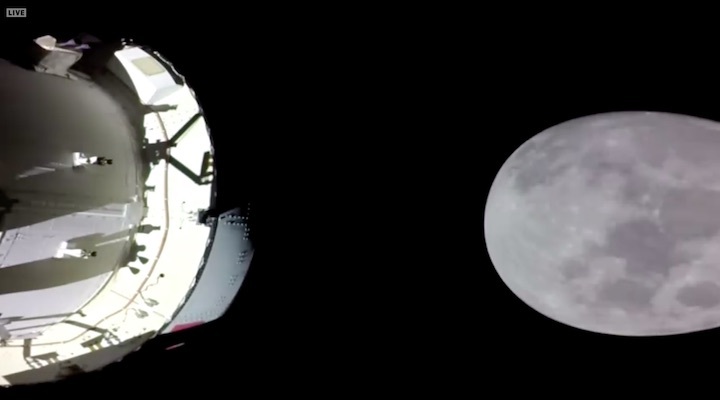
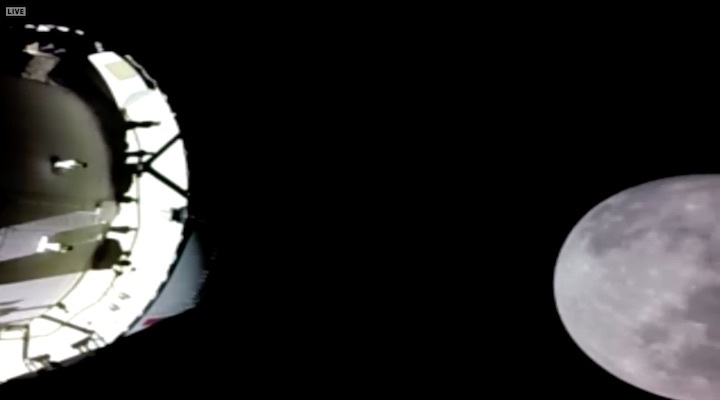
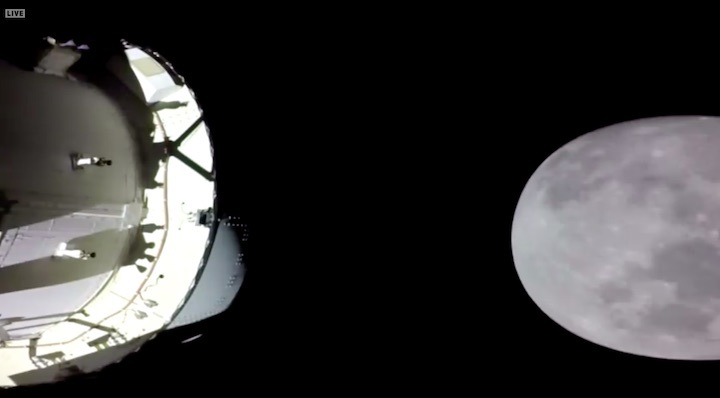
+++ 16:30 MEZ
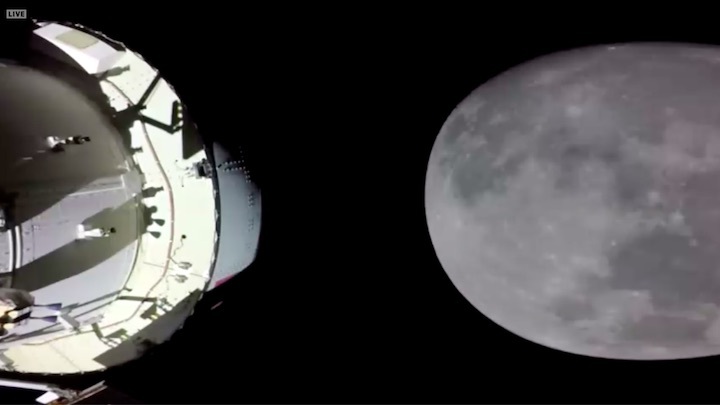
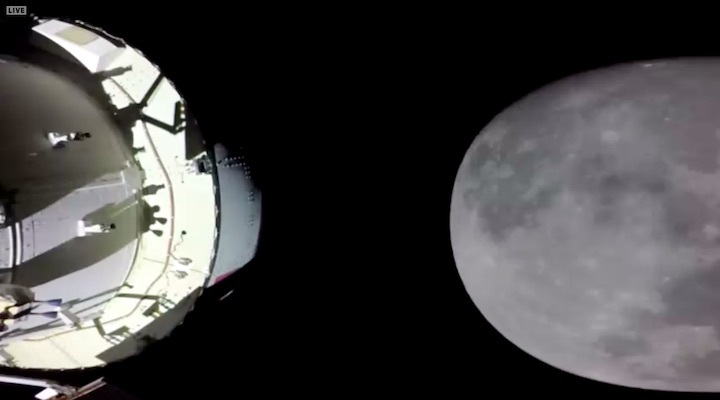
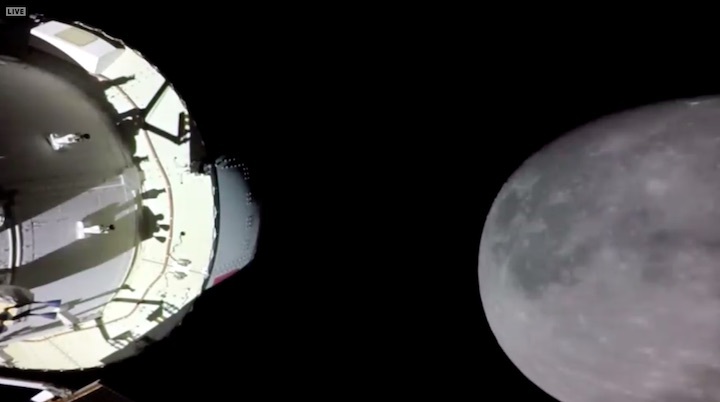
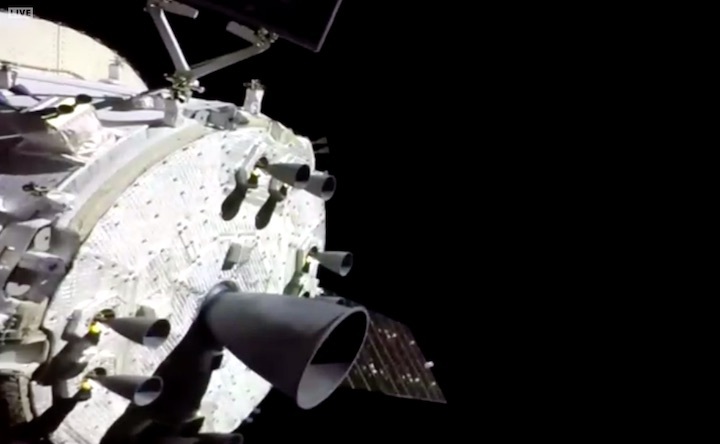
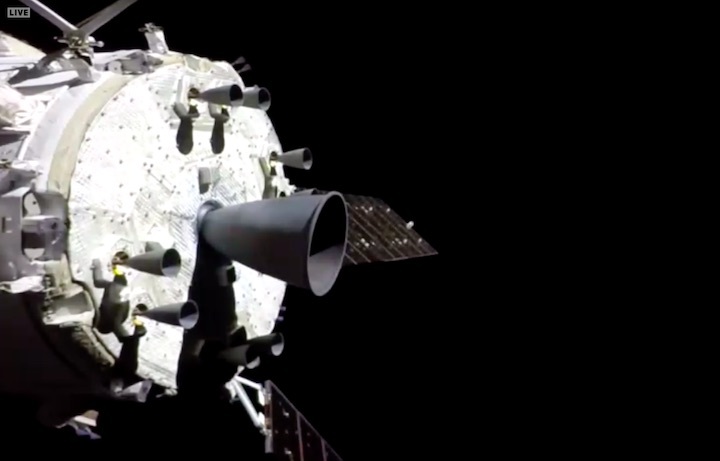
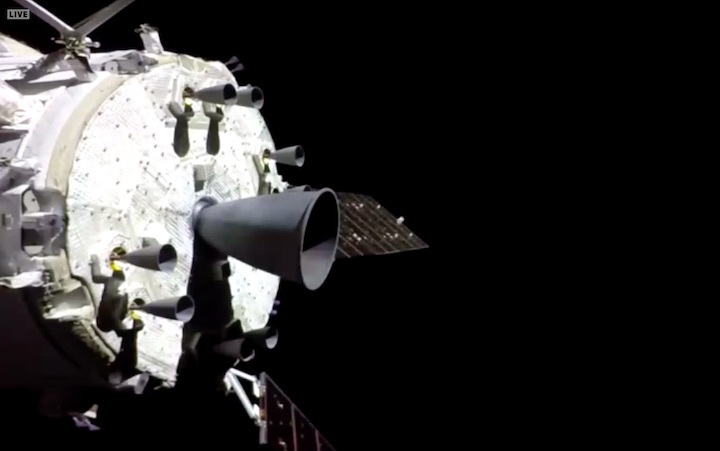
+++ 16:50 MEZ
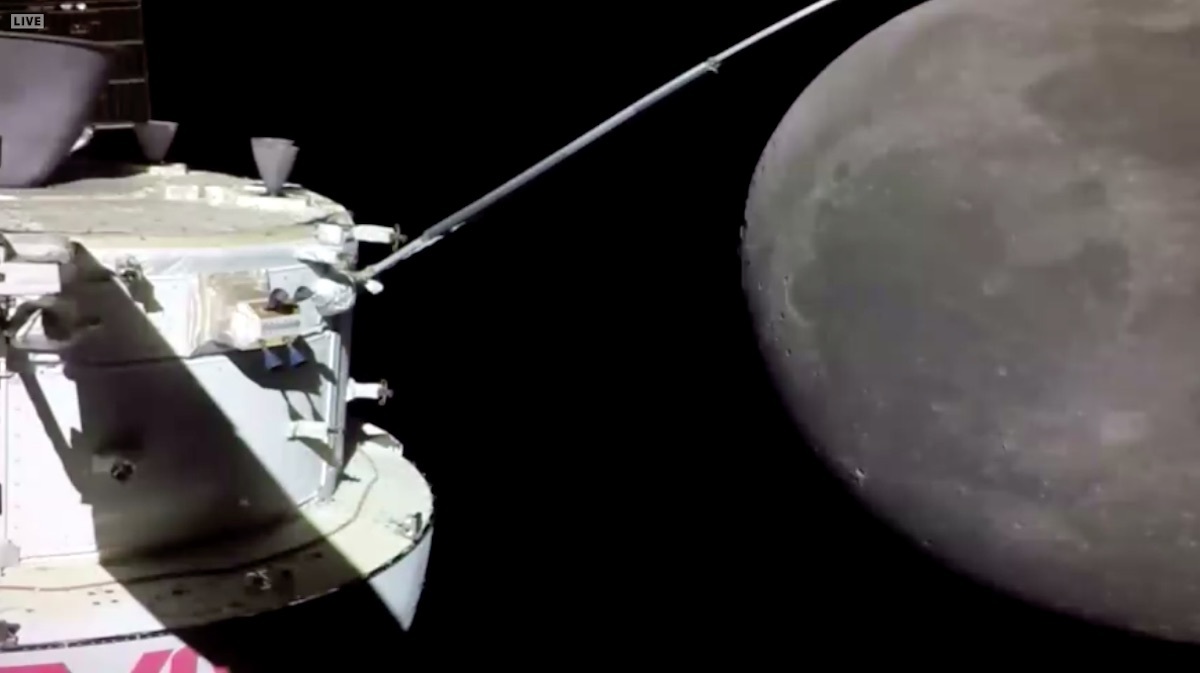
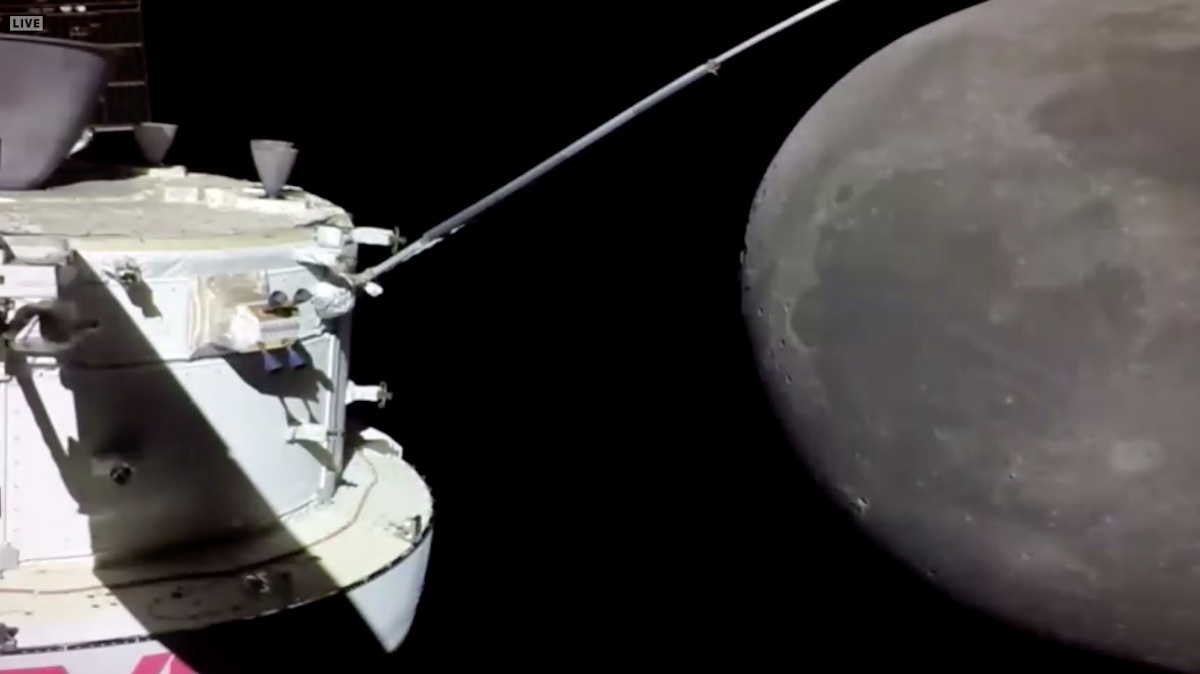
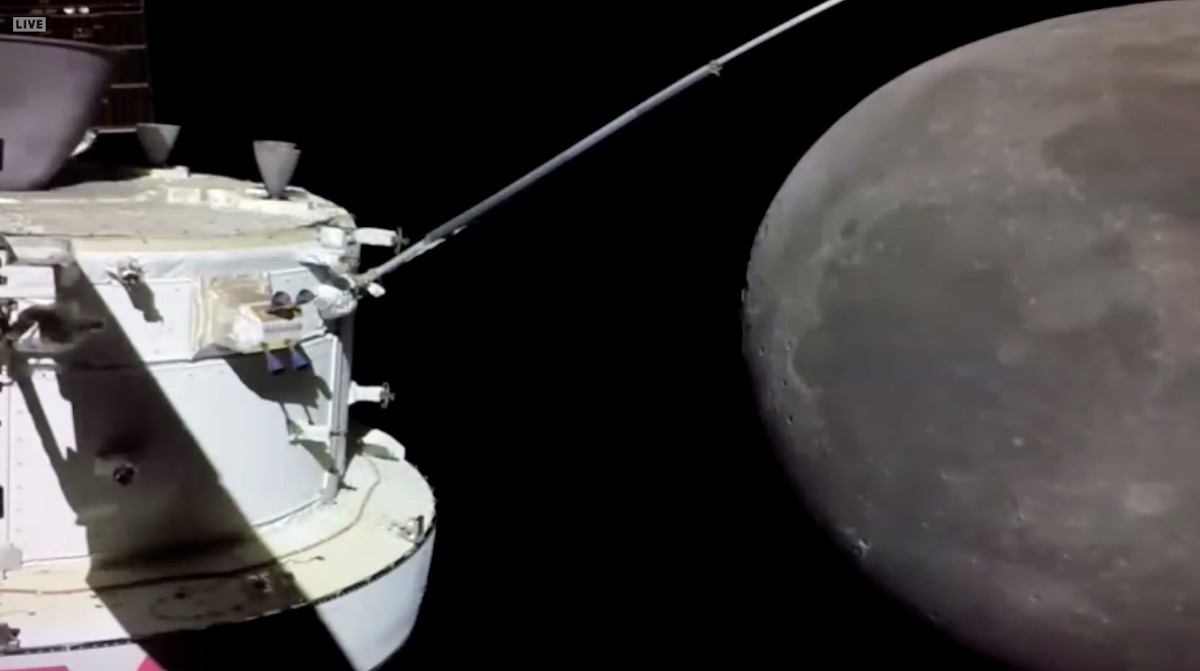
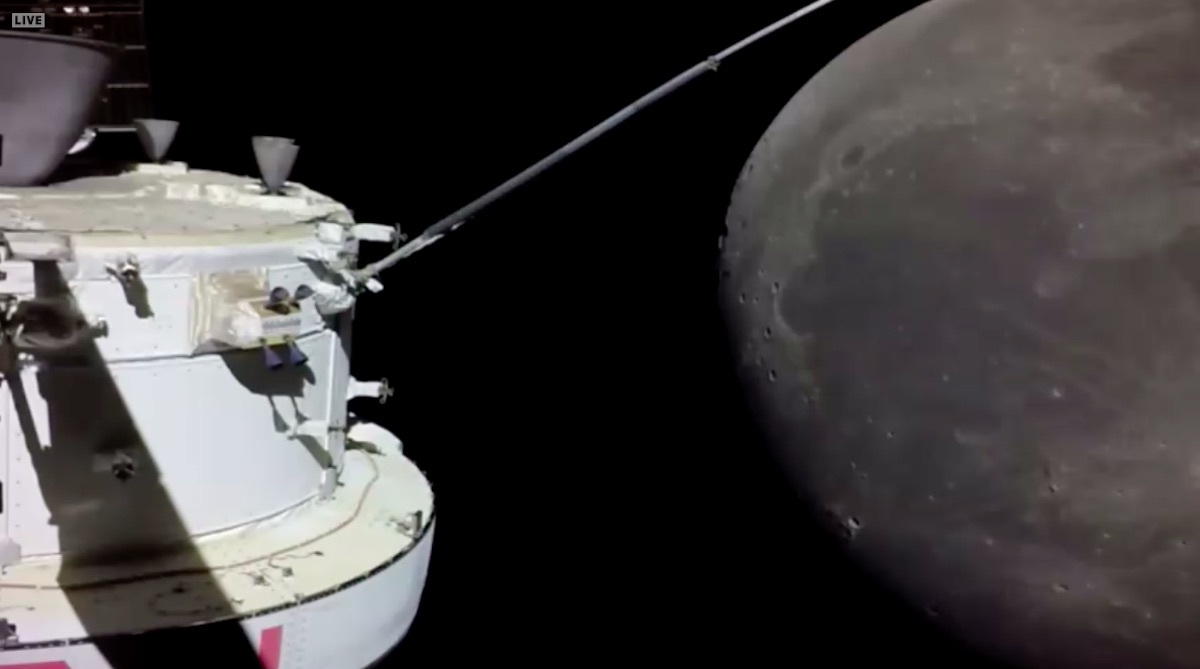
+++ 17:30 MEZ
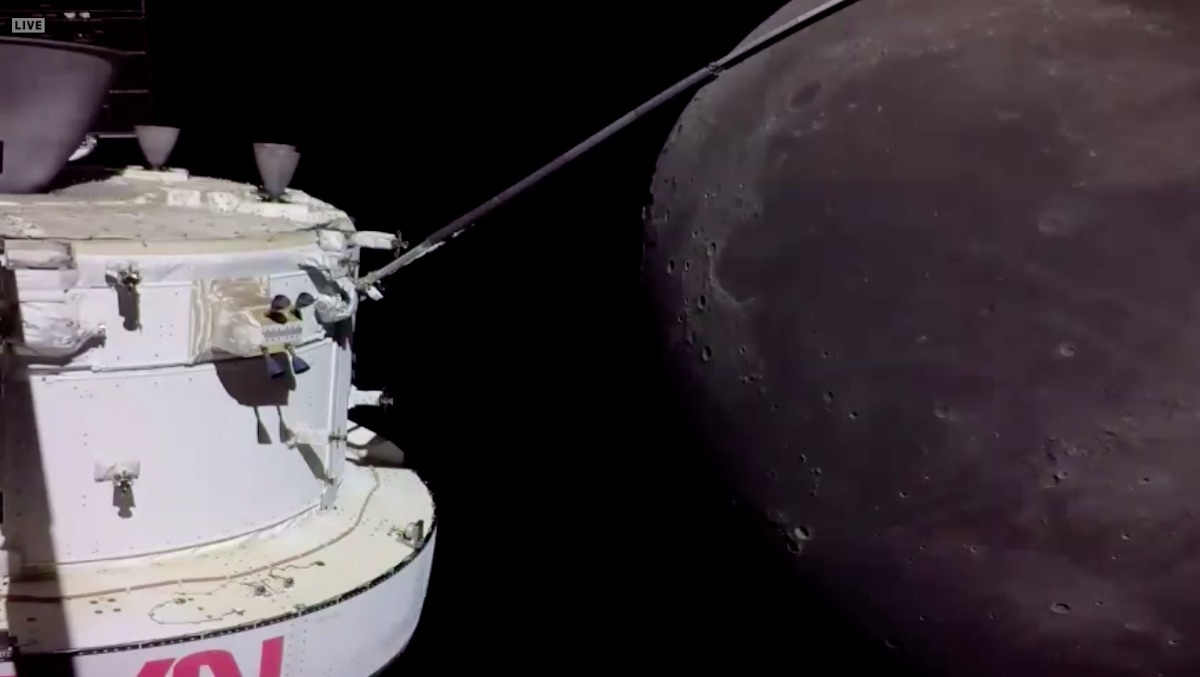
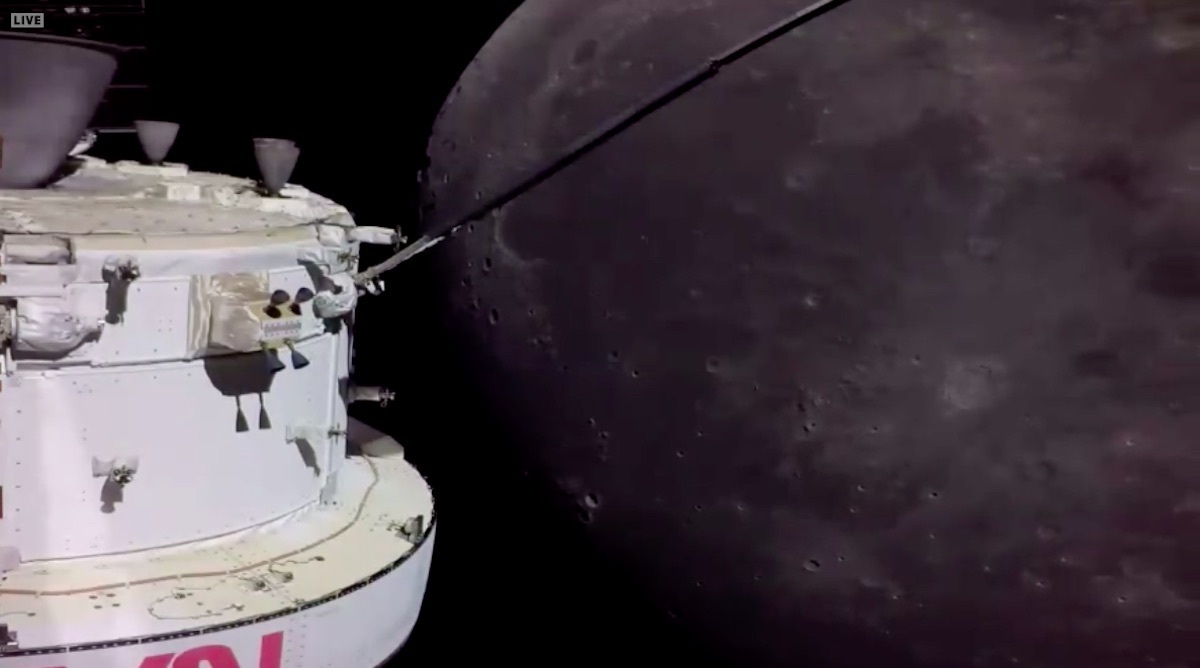
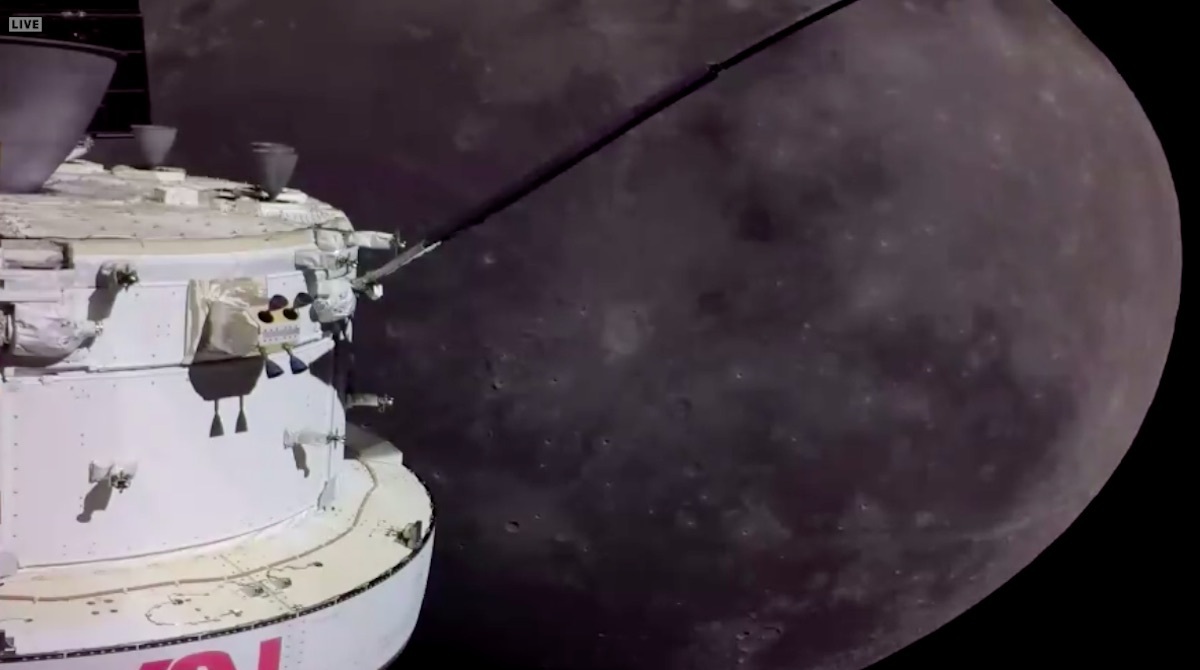
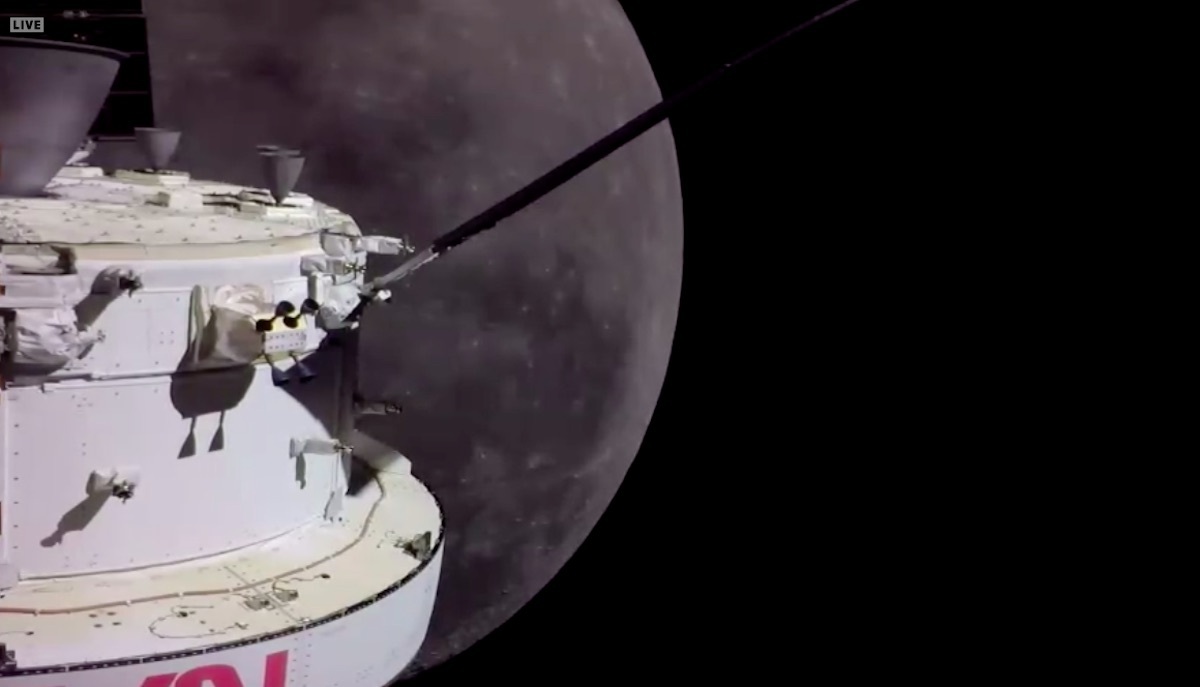
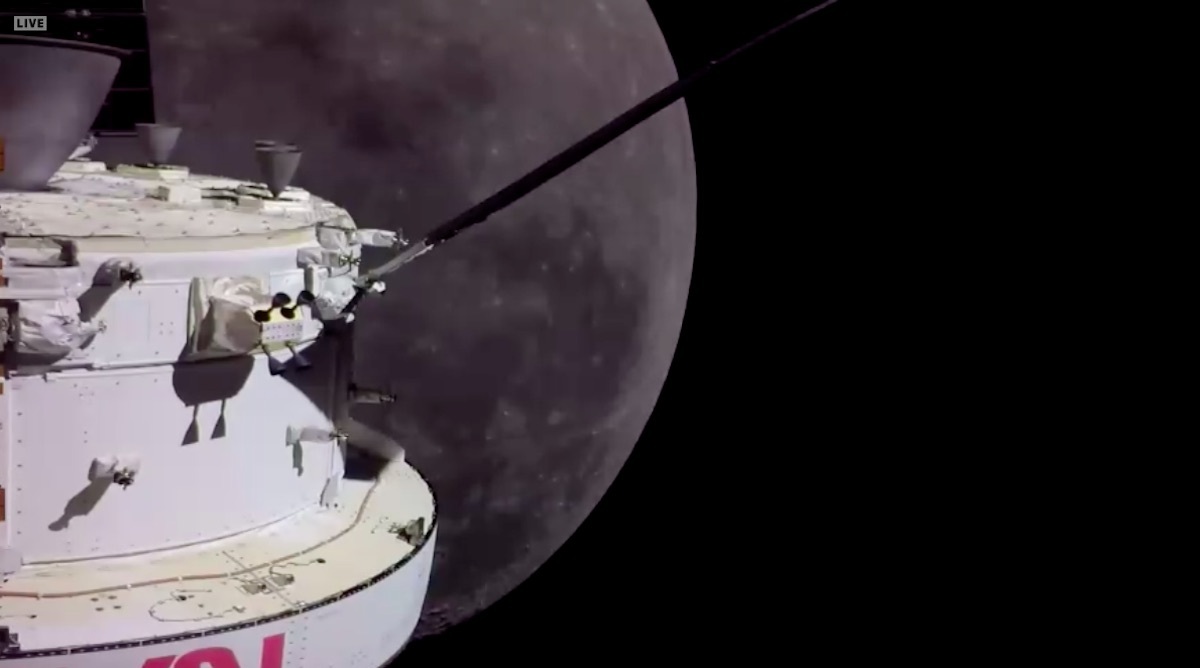
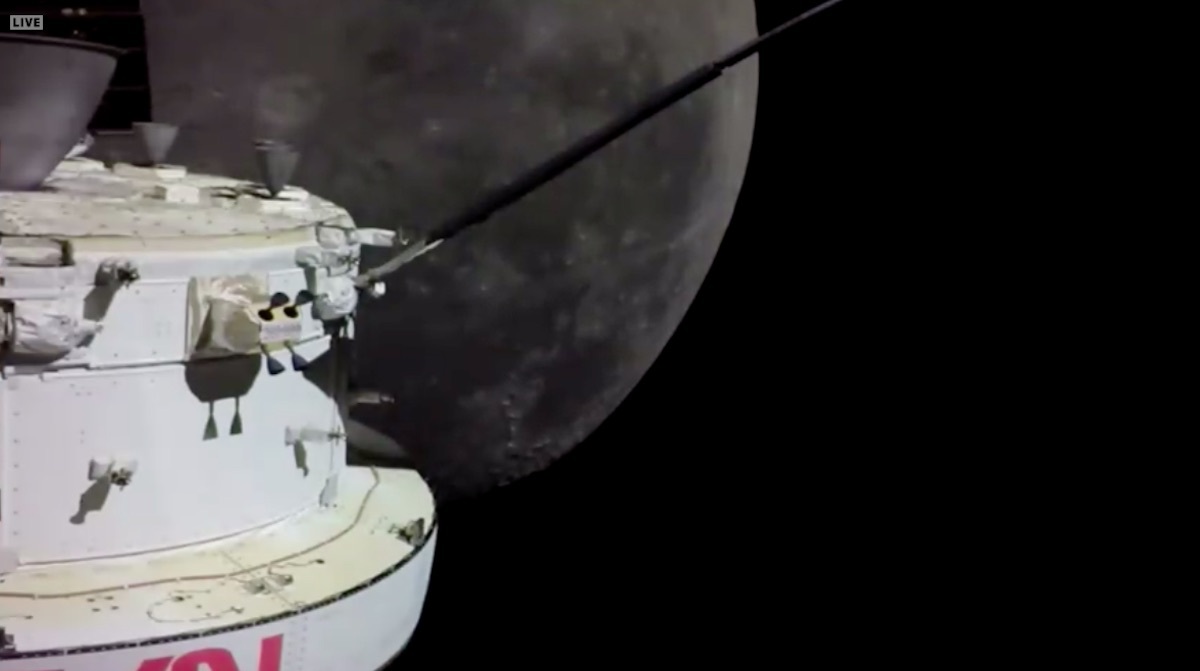
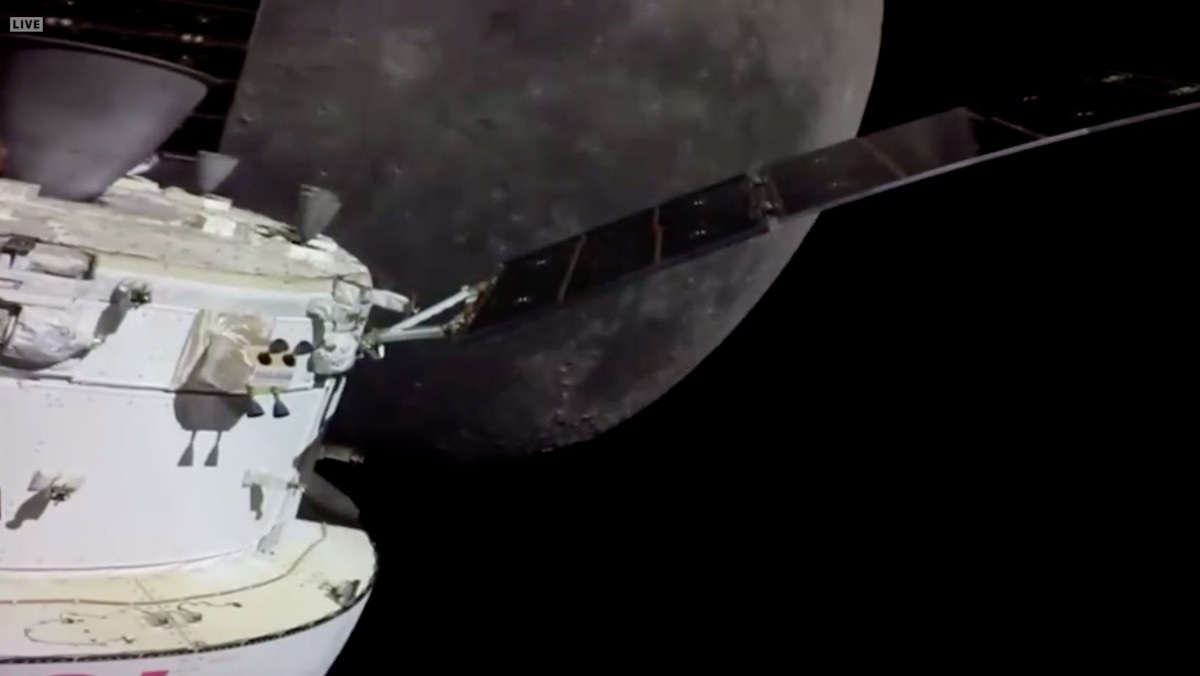
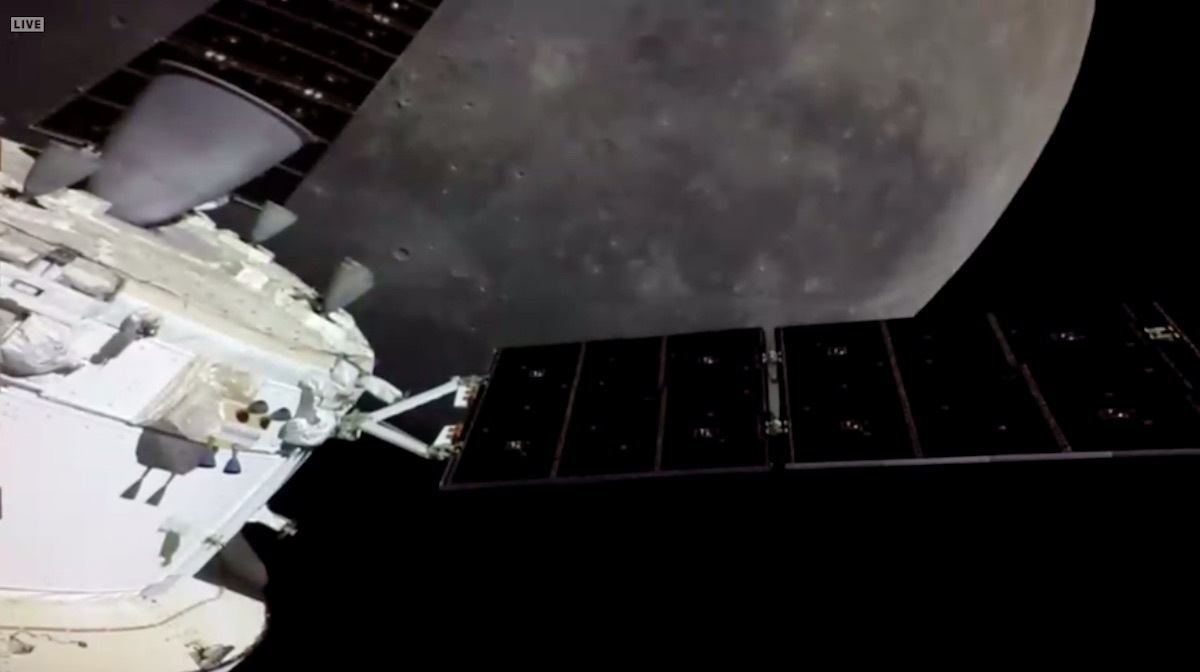
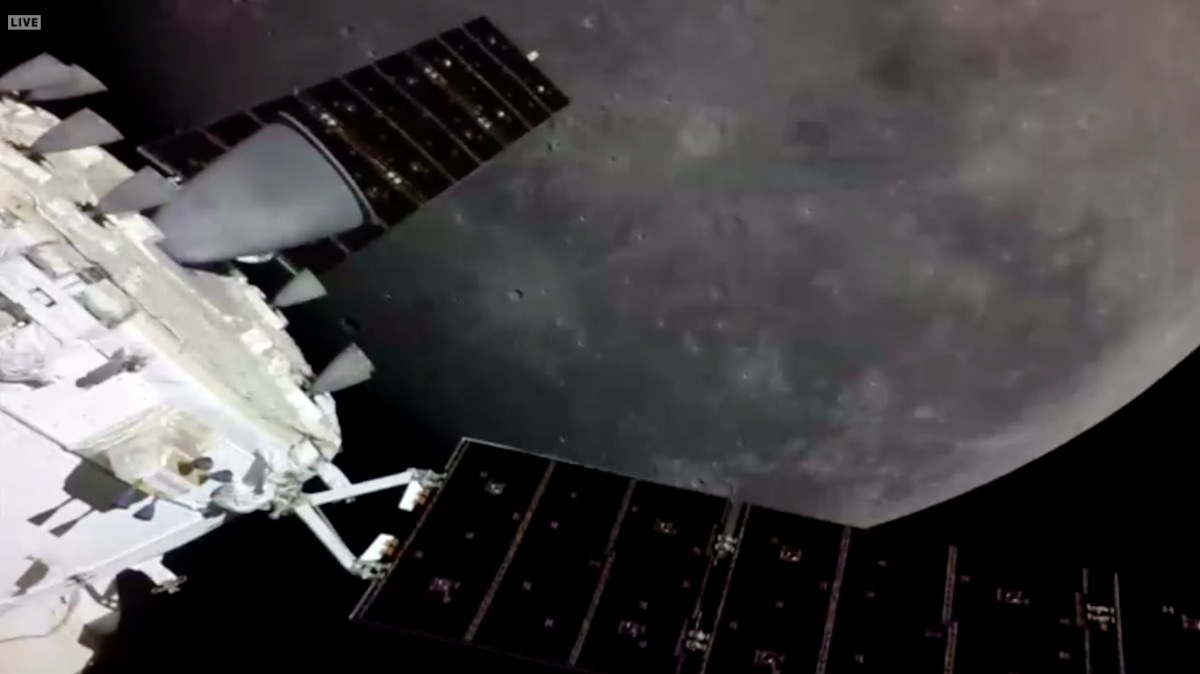
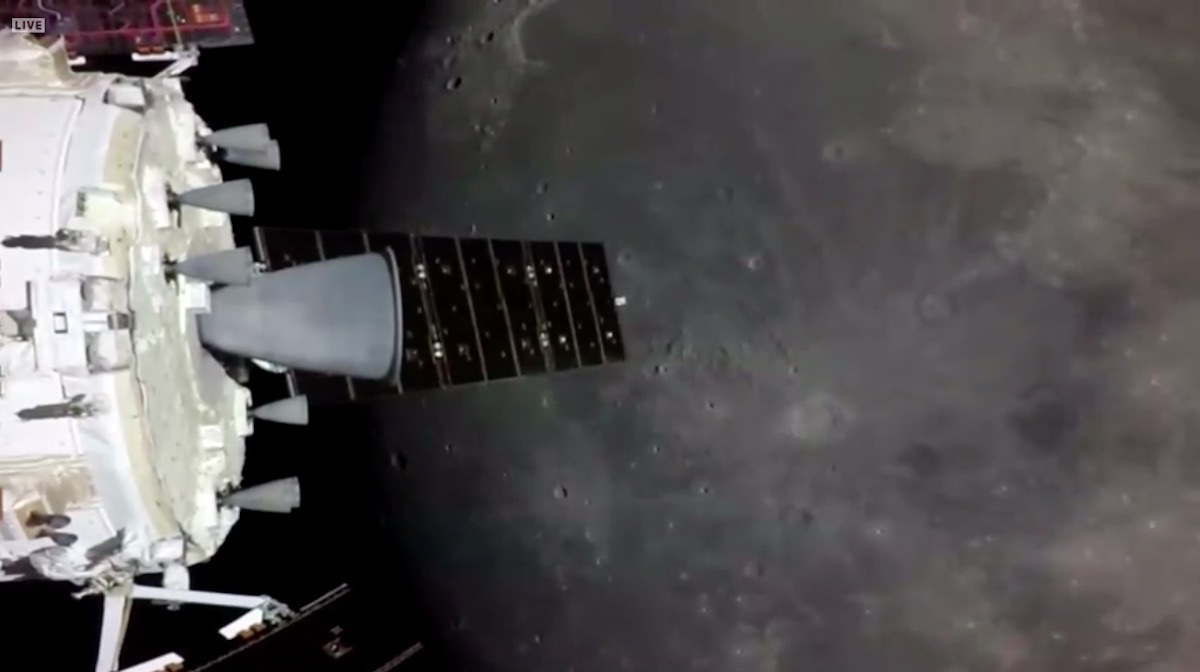
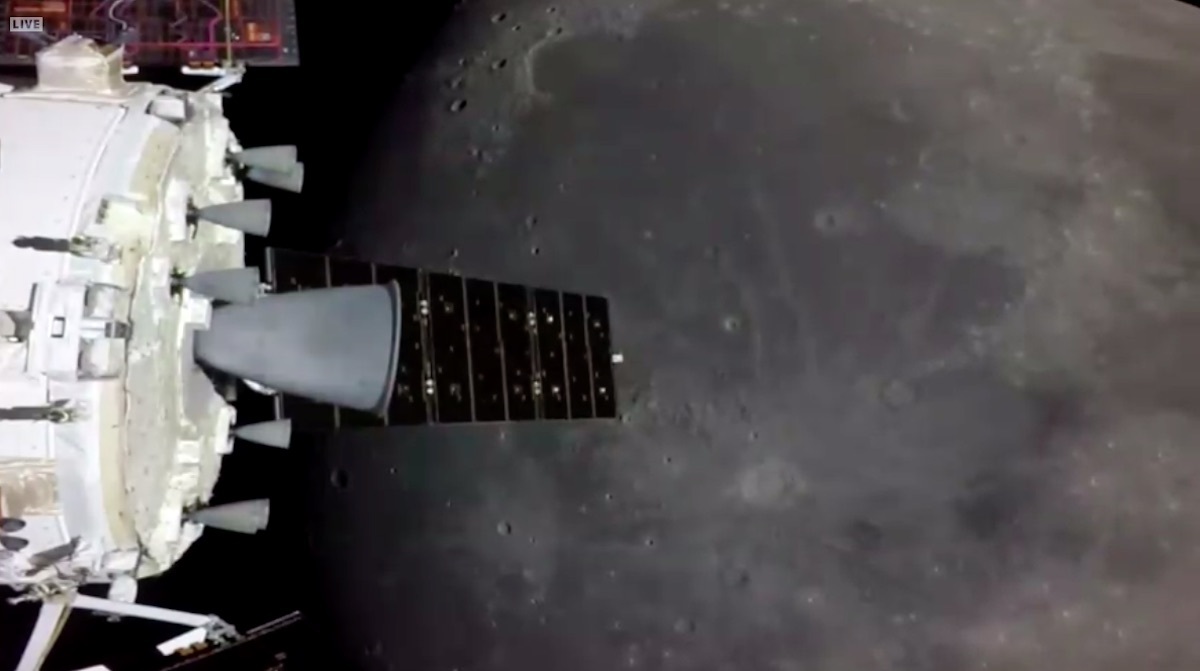
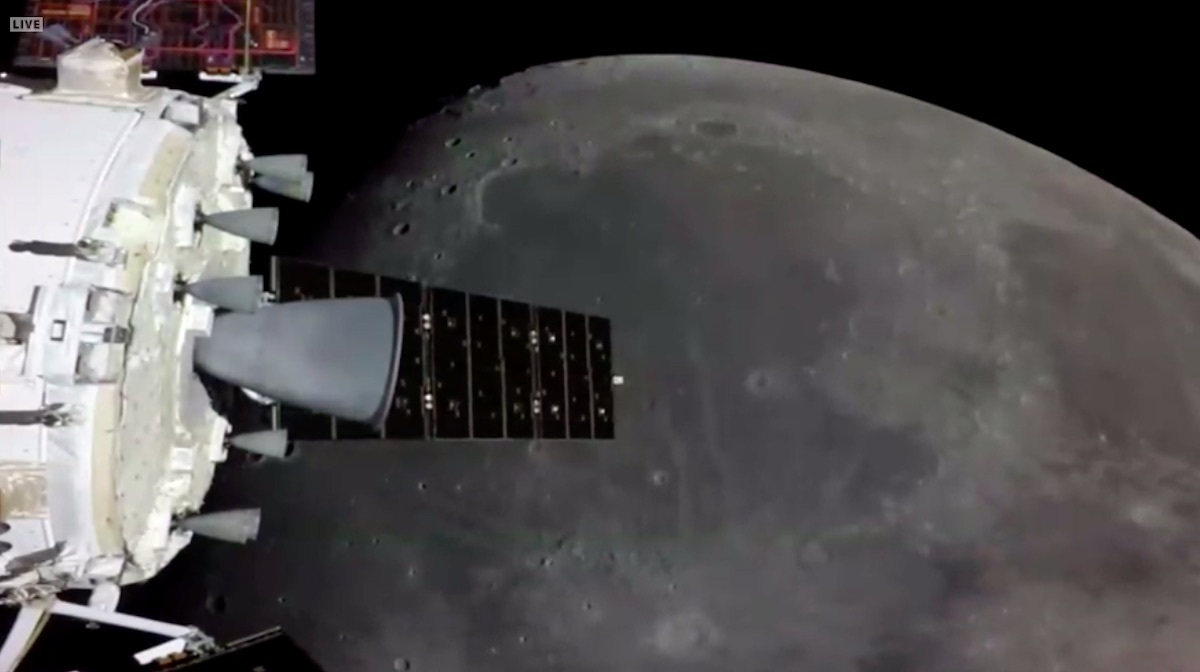
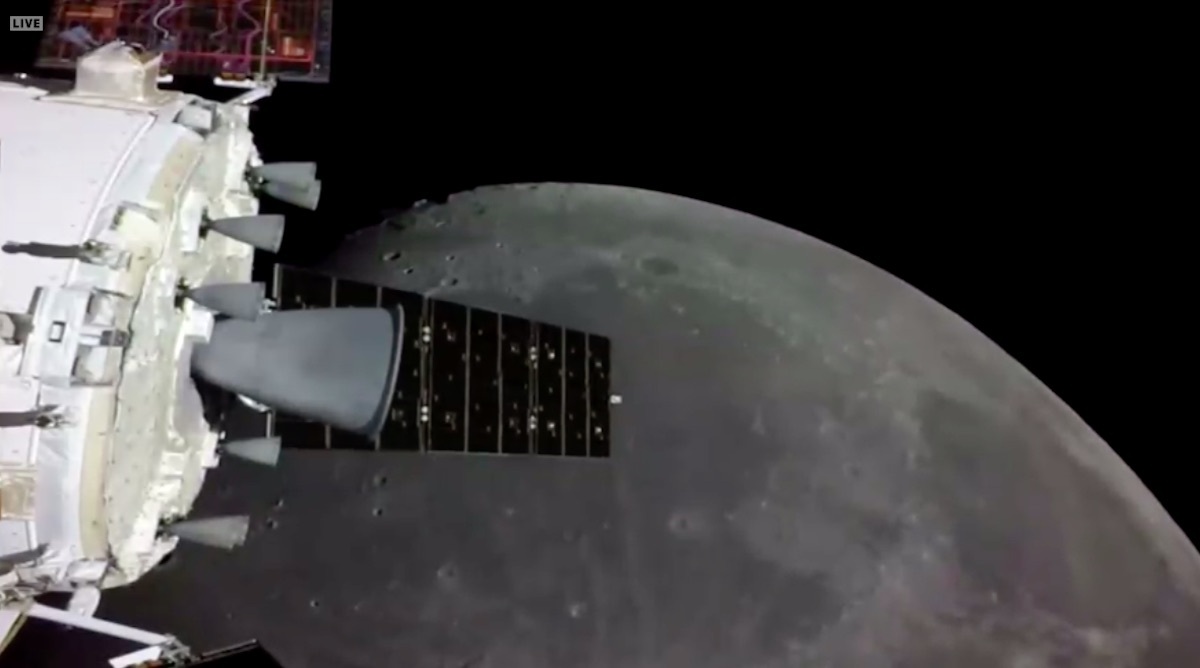
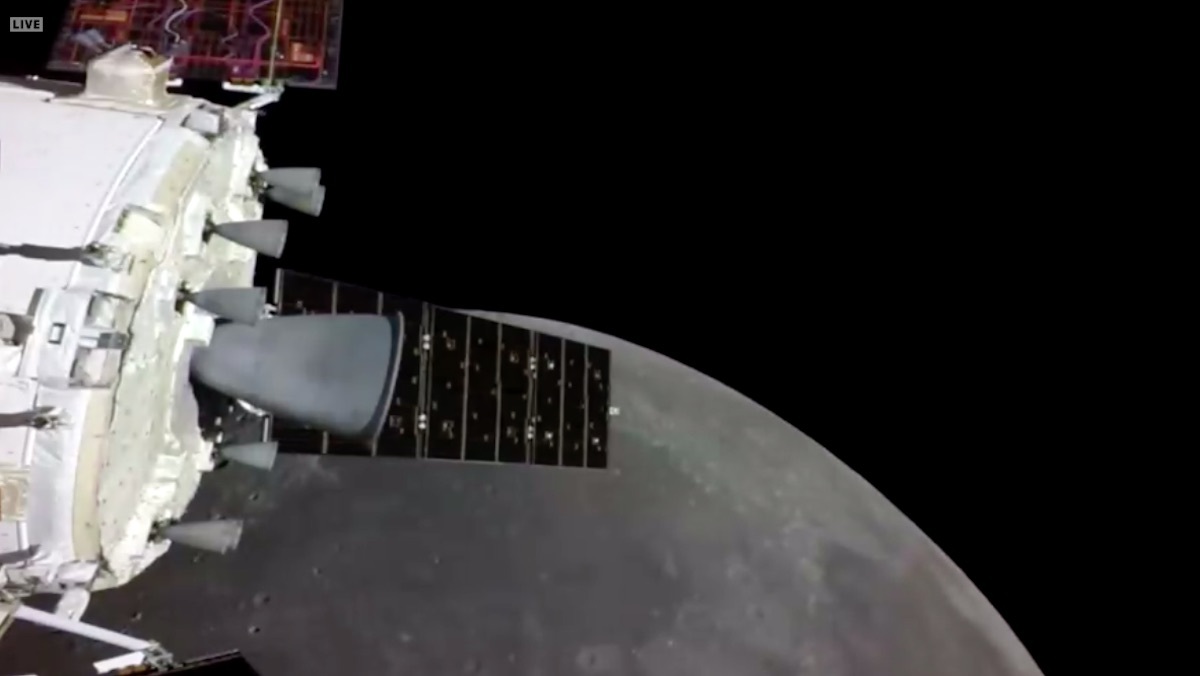
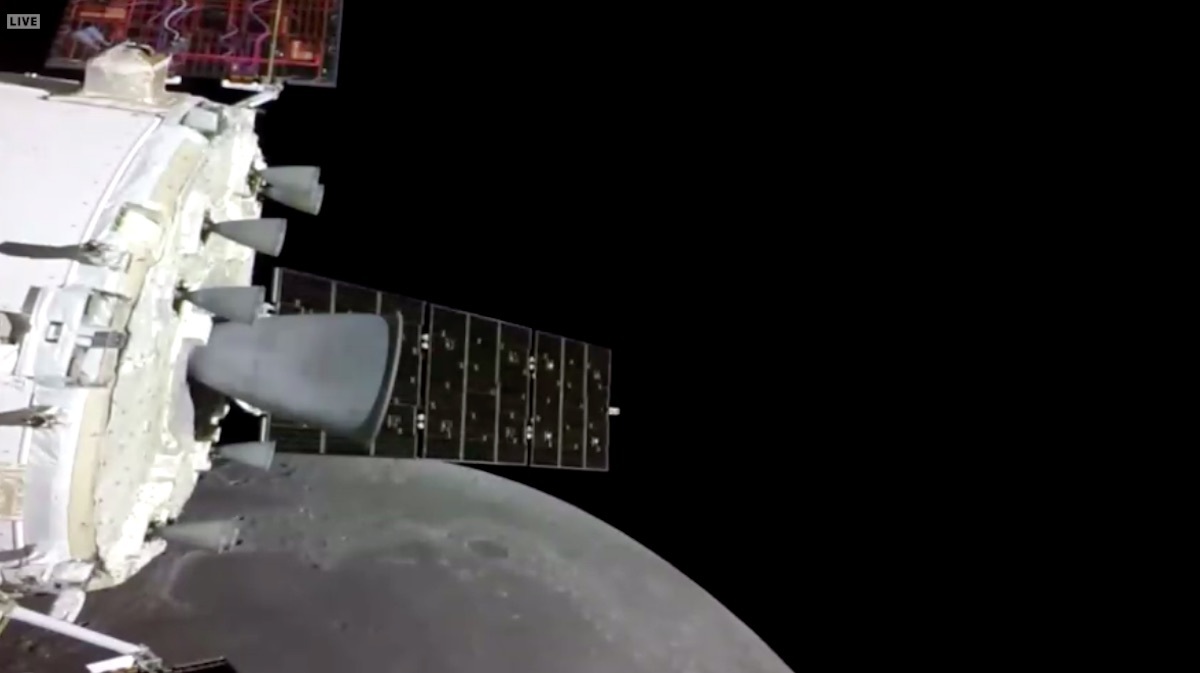
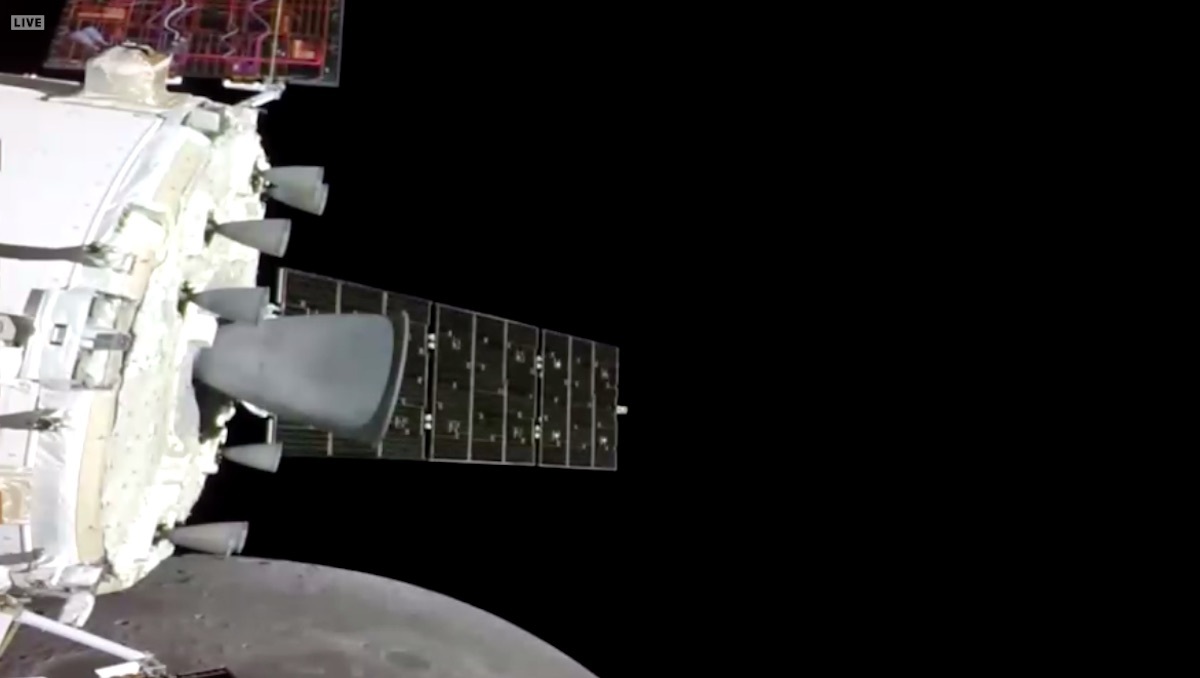
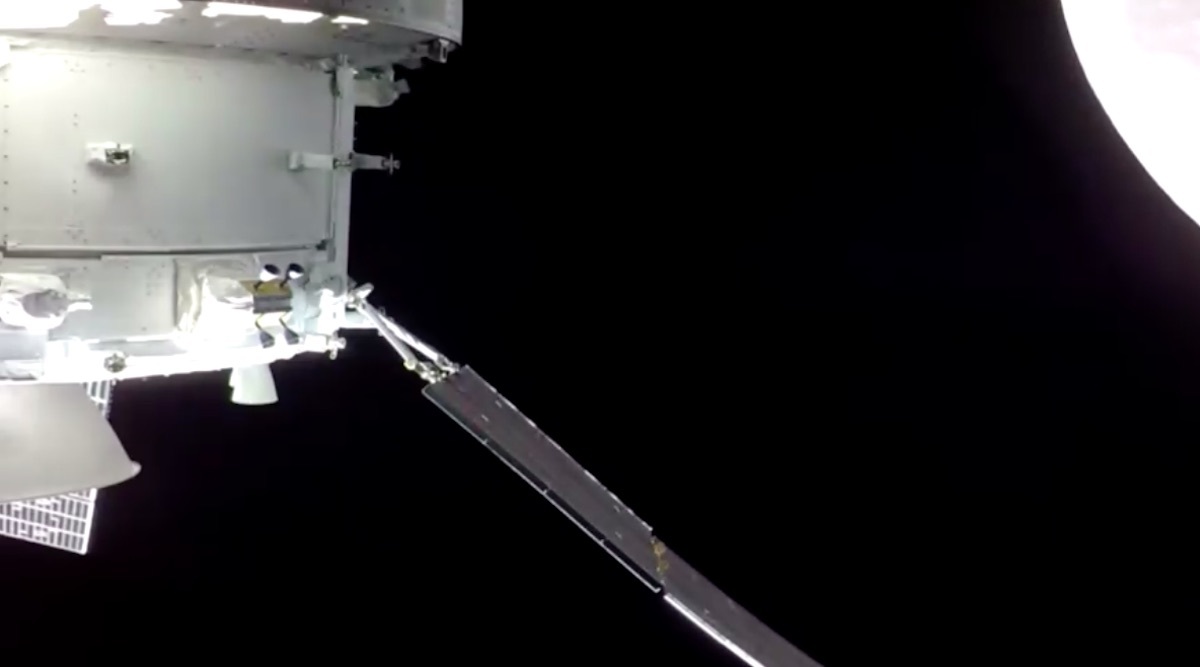
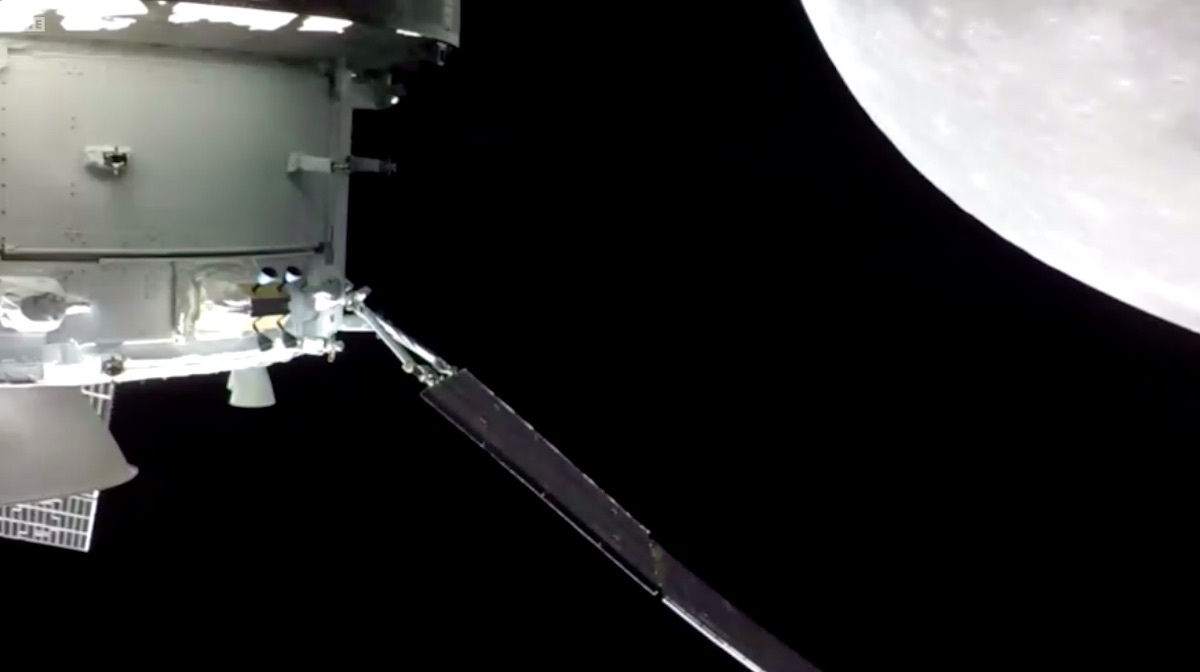
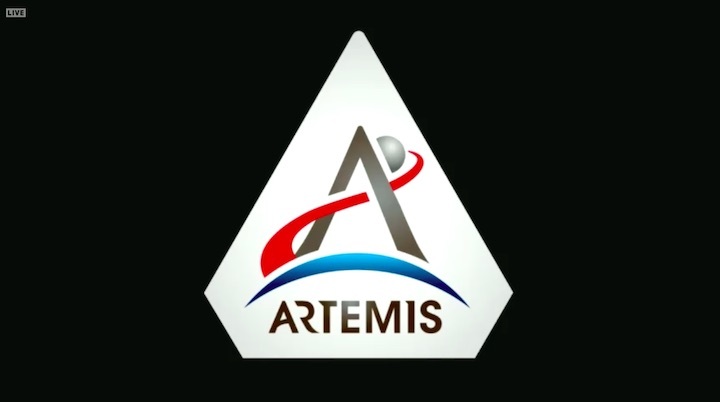
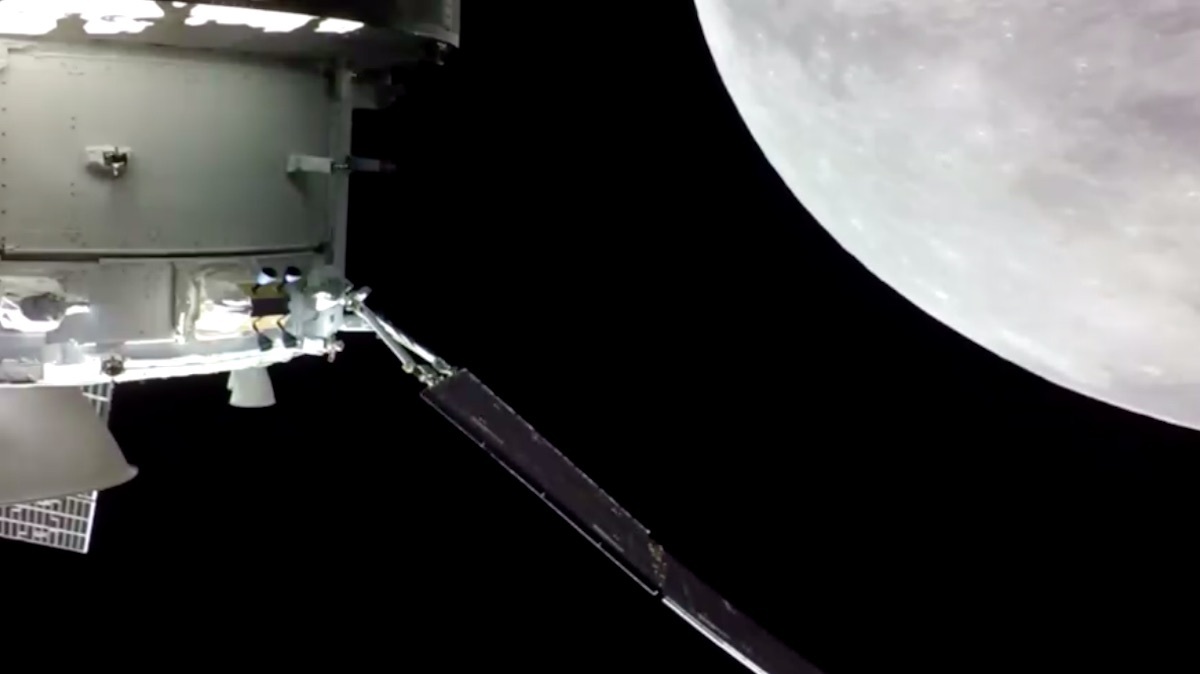
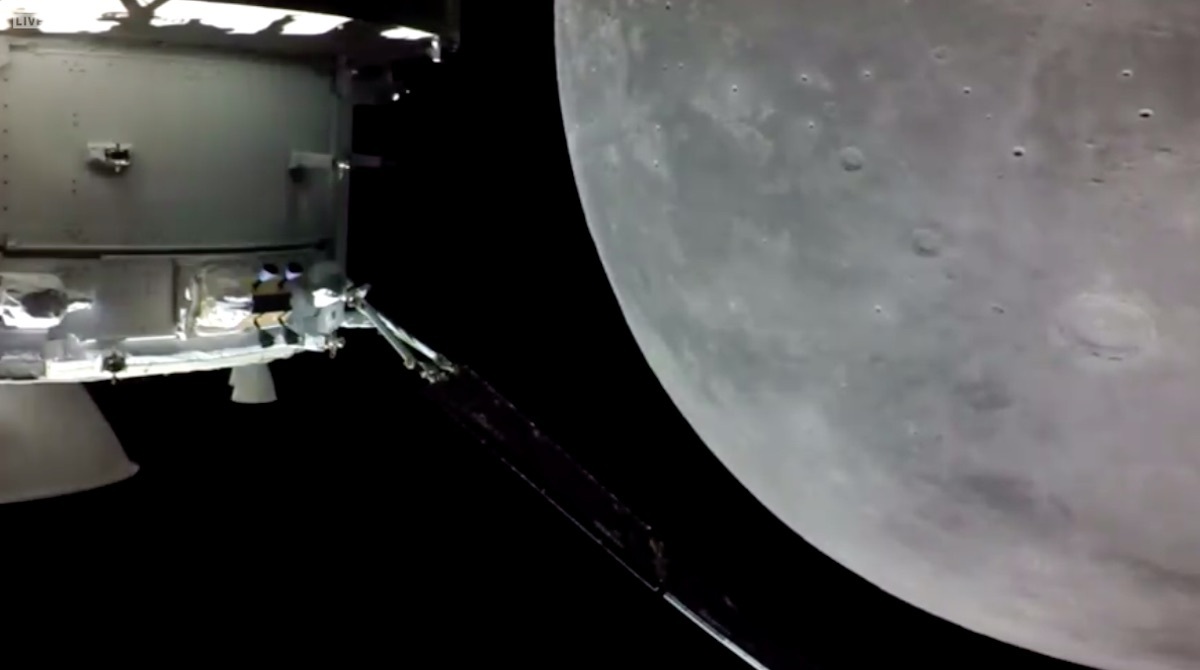
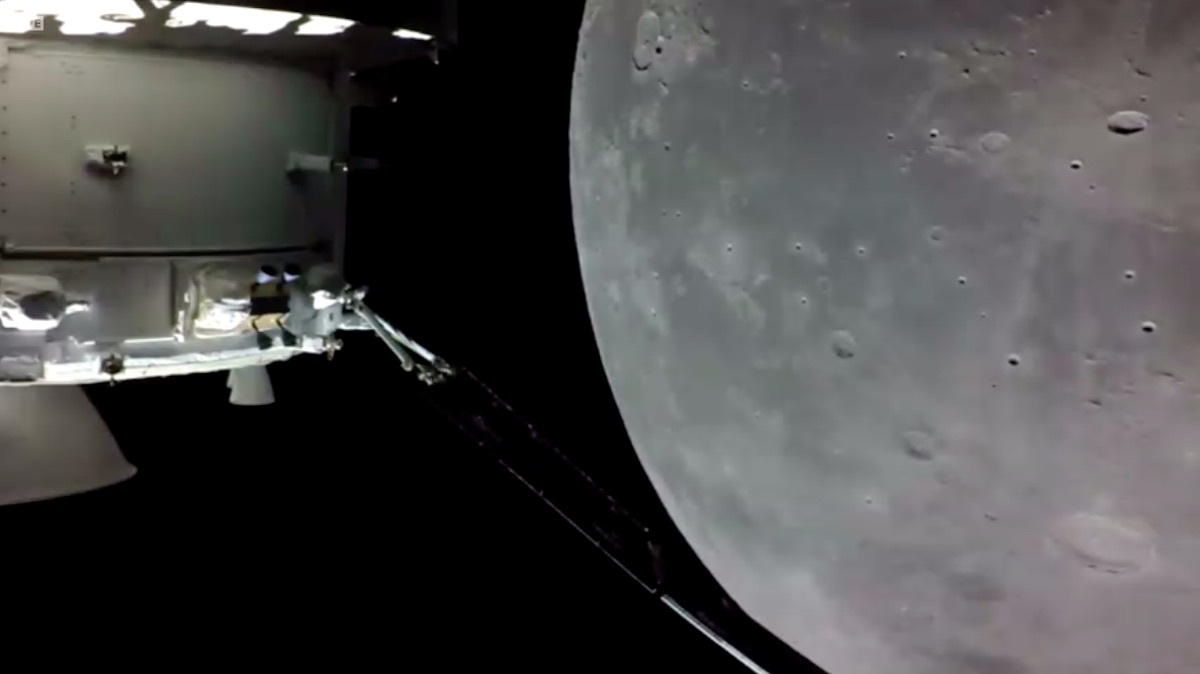
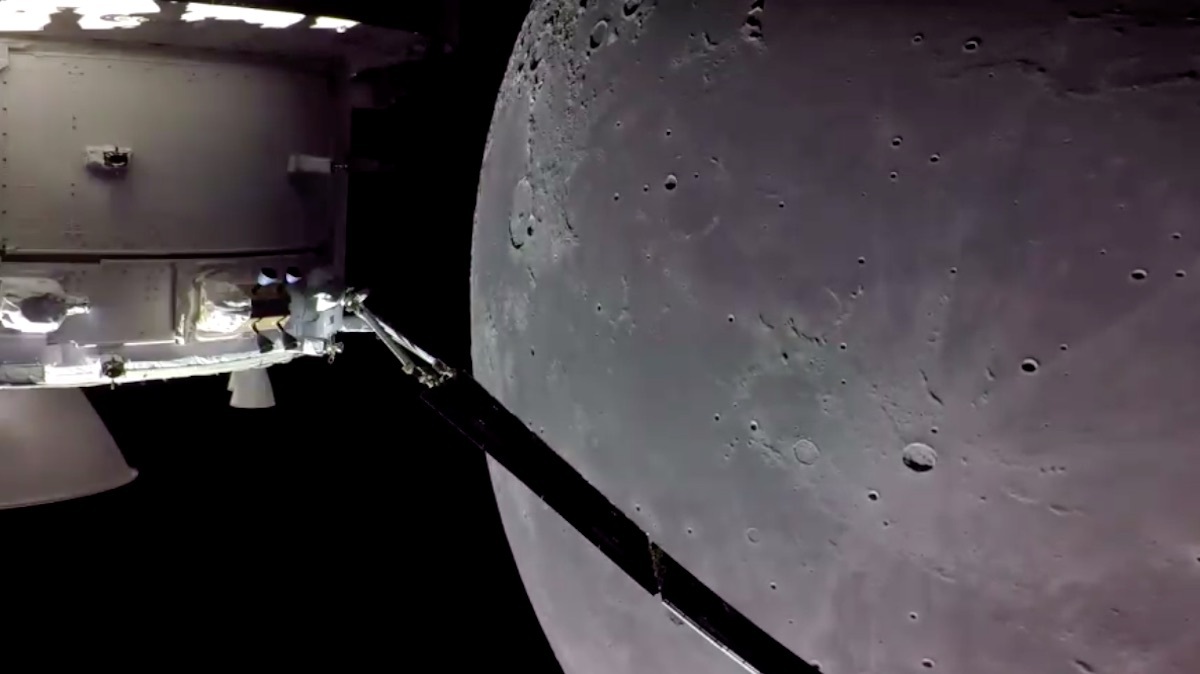
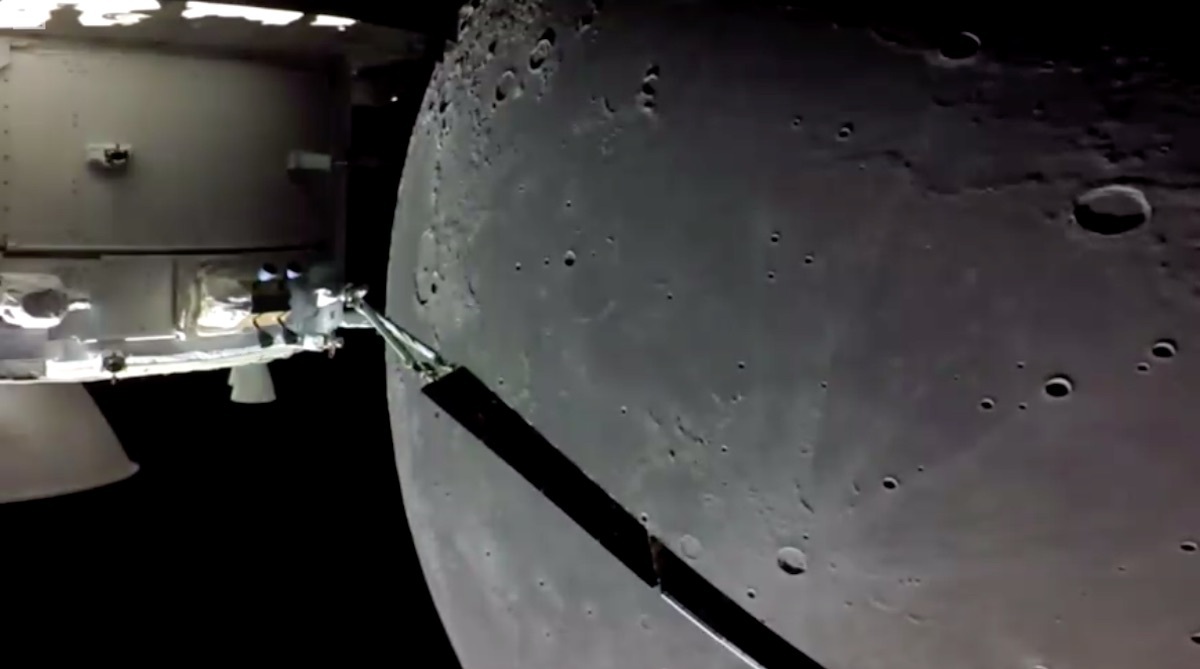
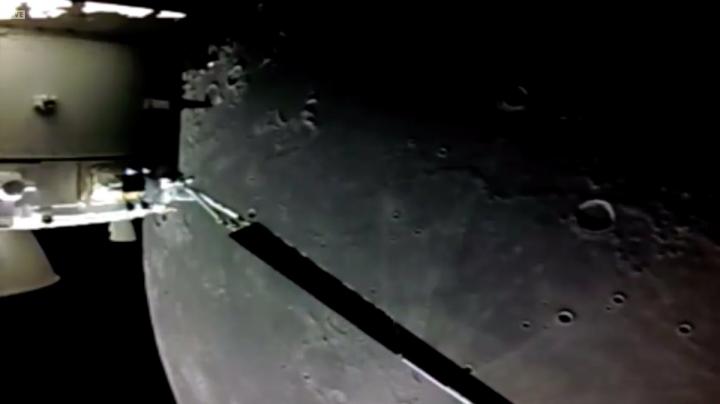
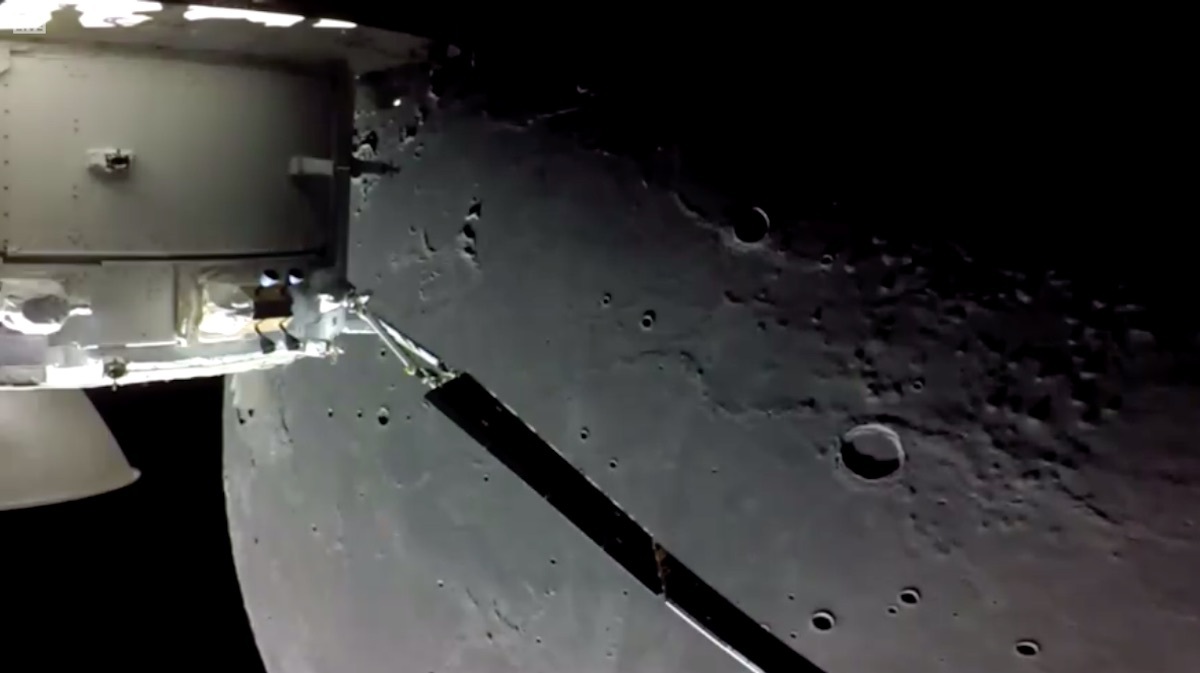
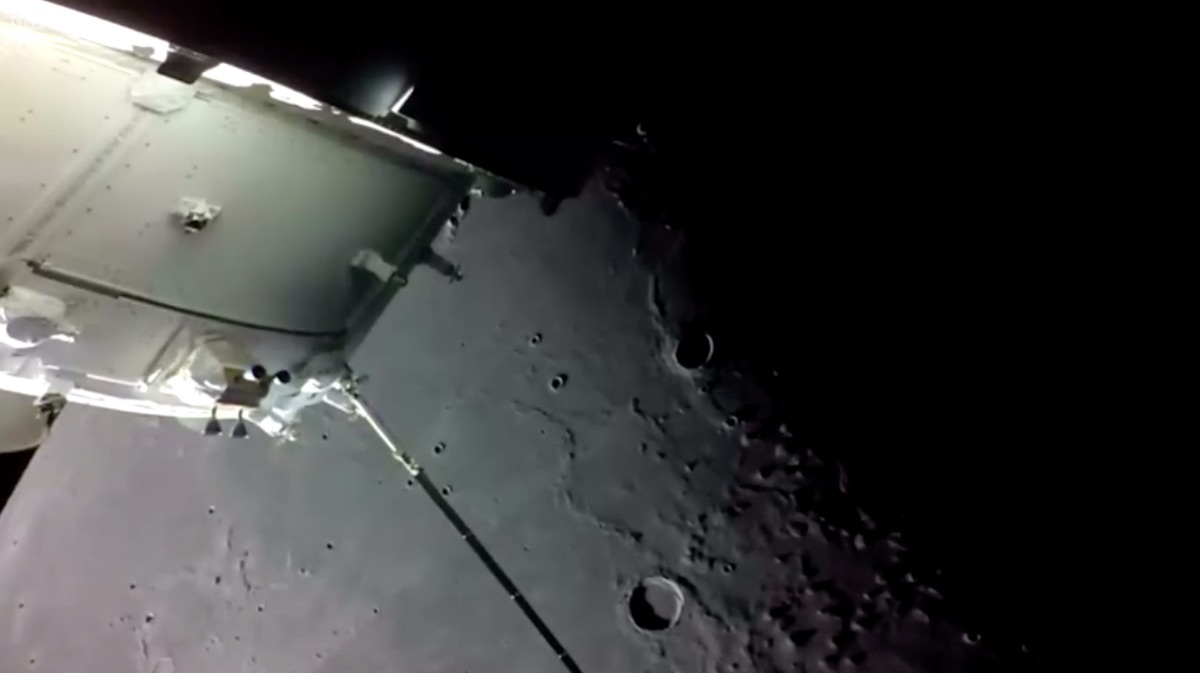
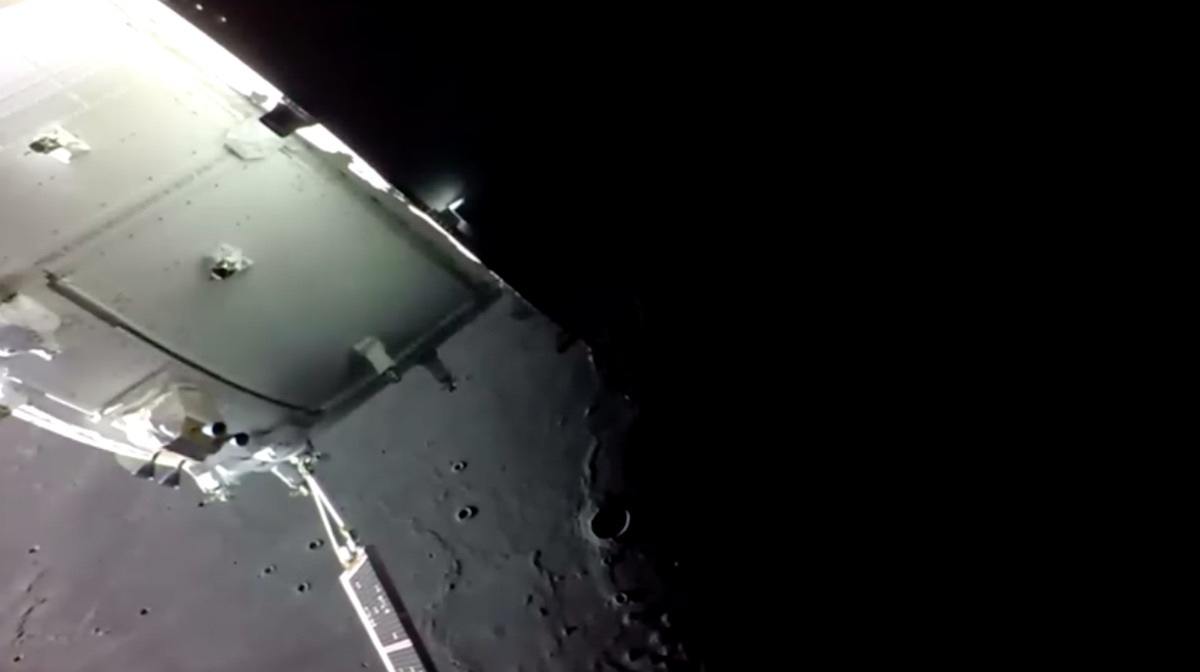
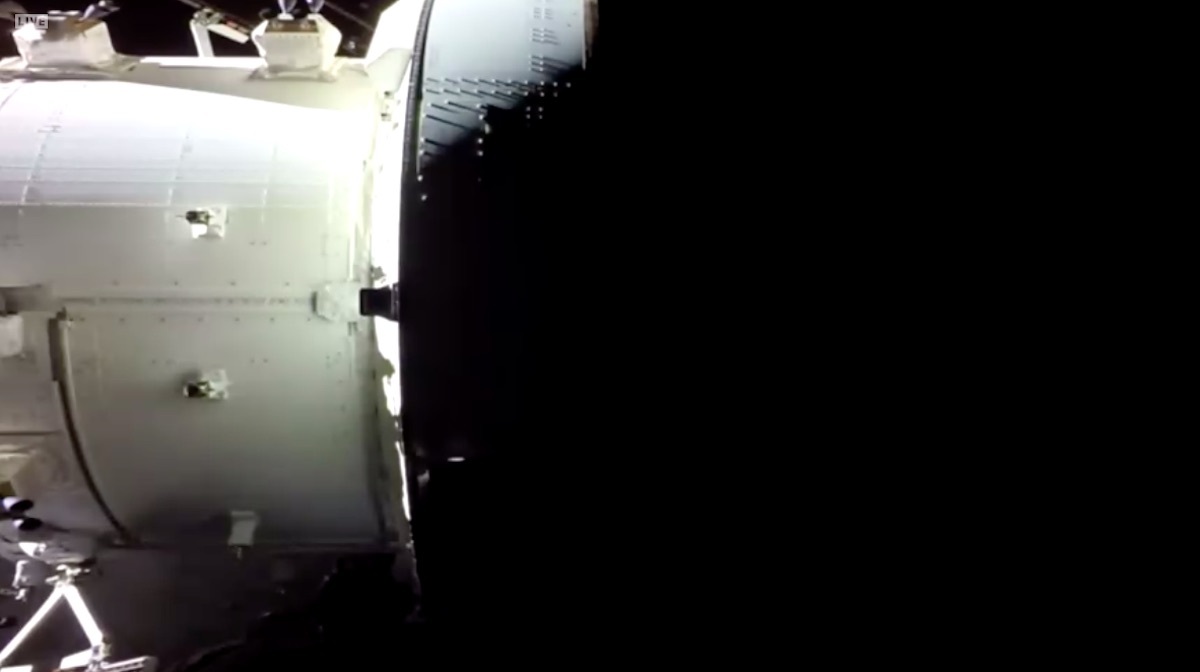
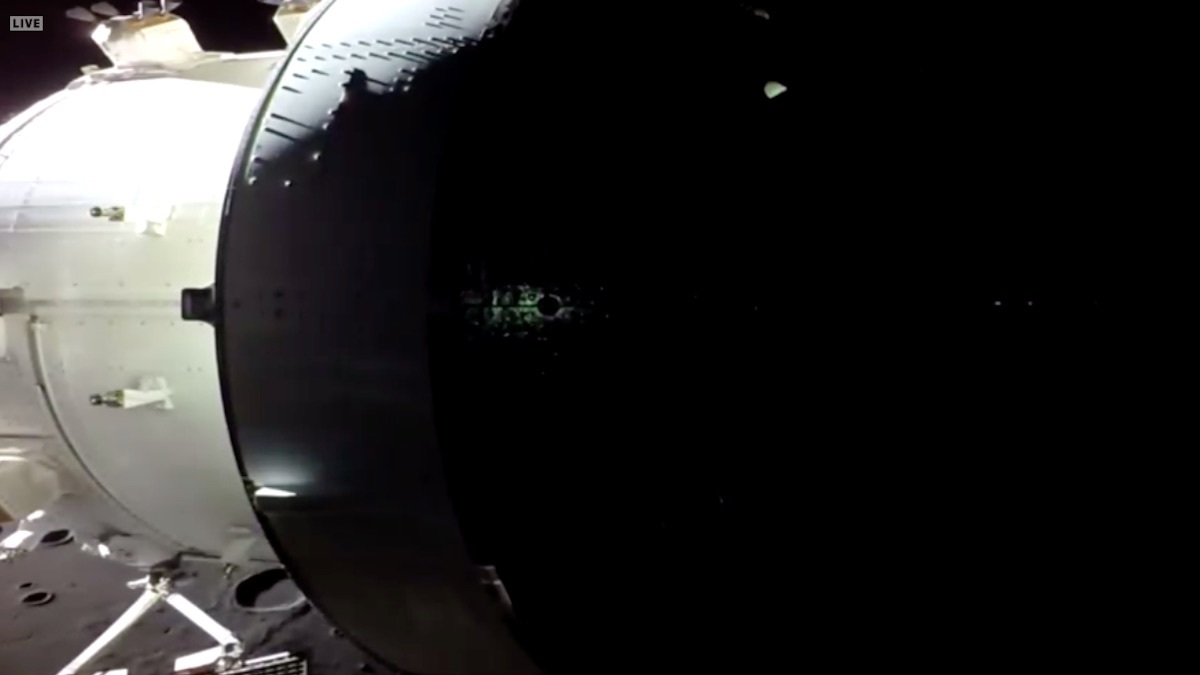
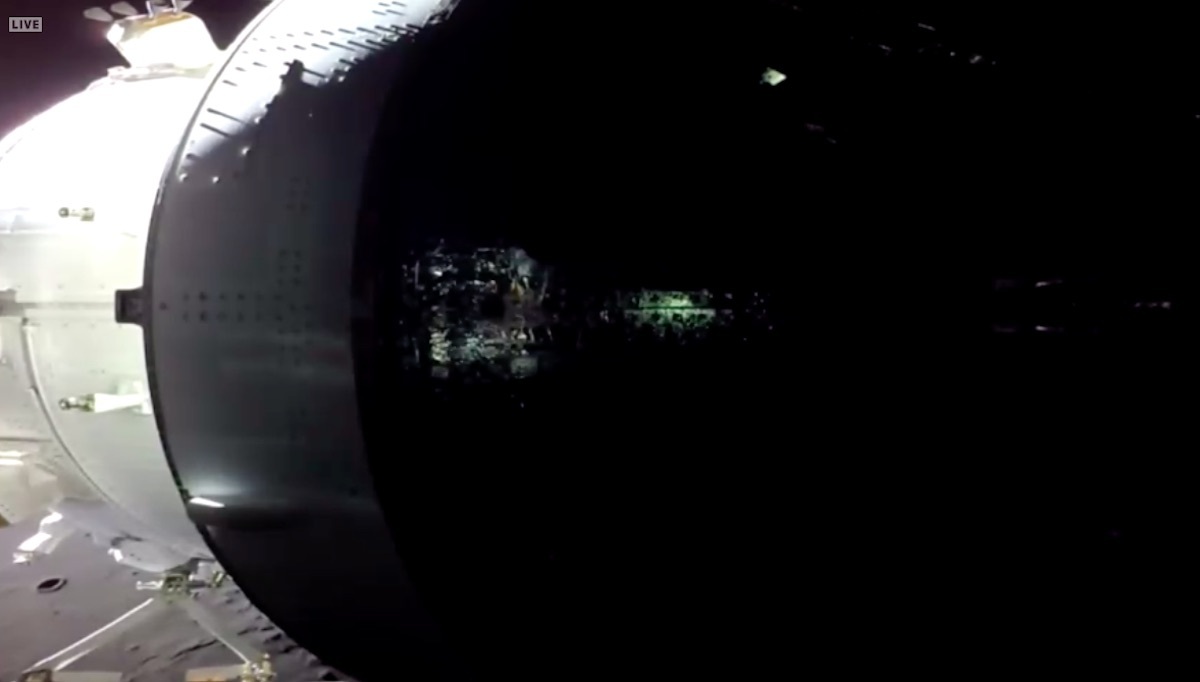
Quelle: NASA-Artemis
